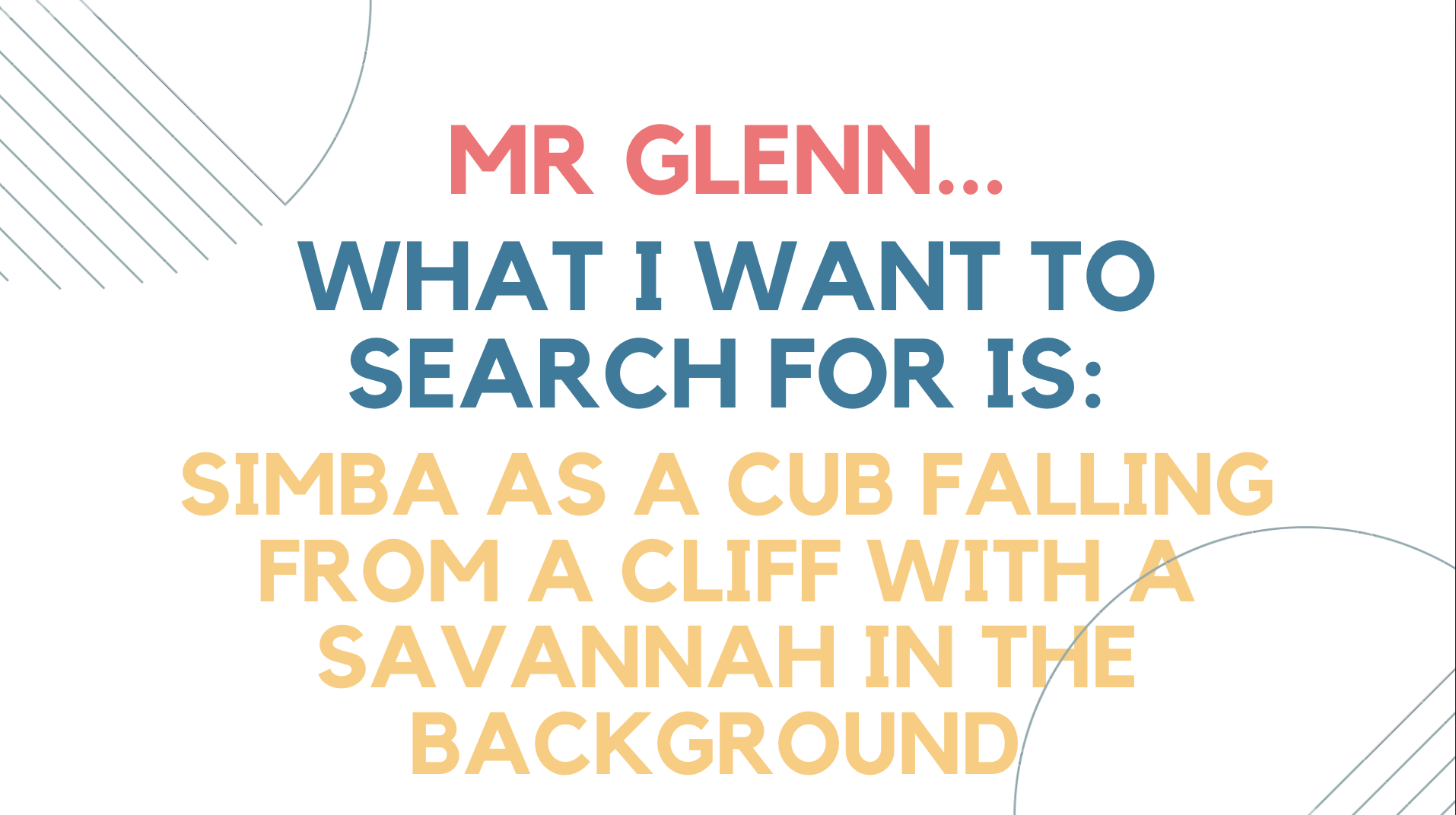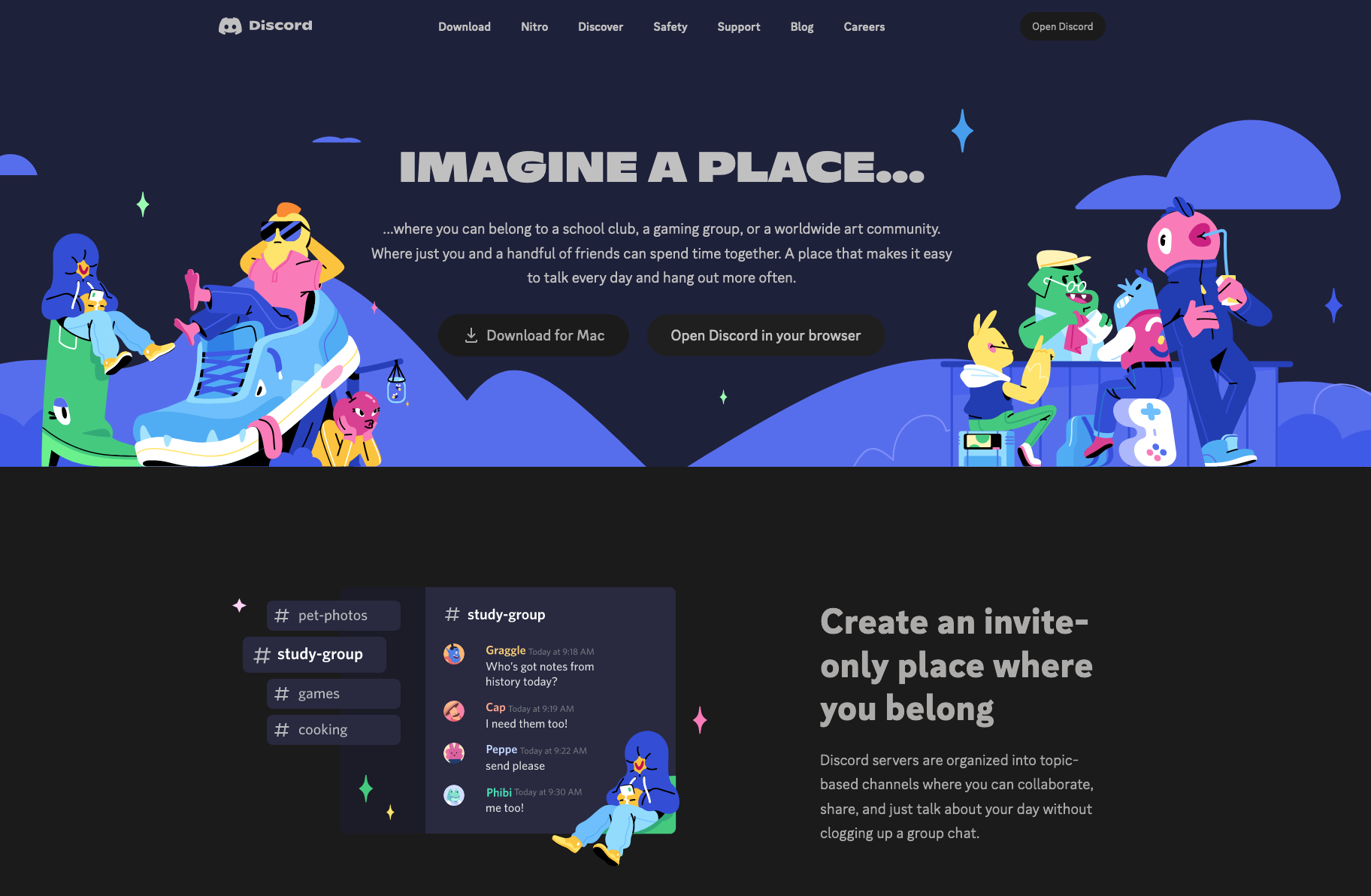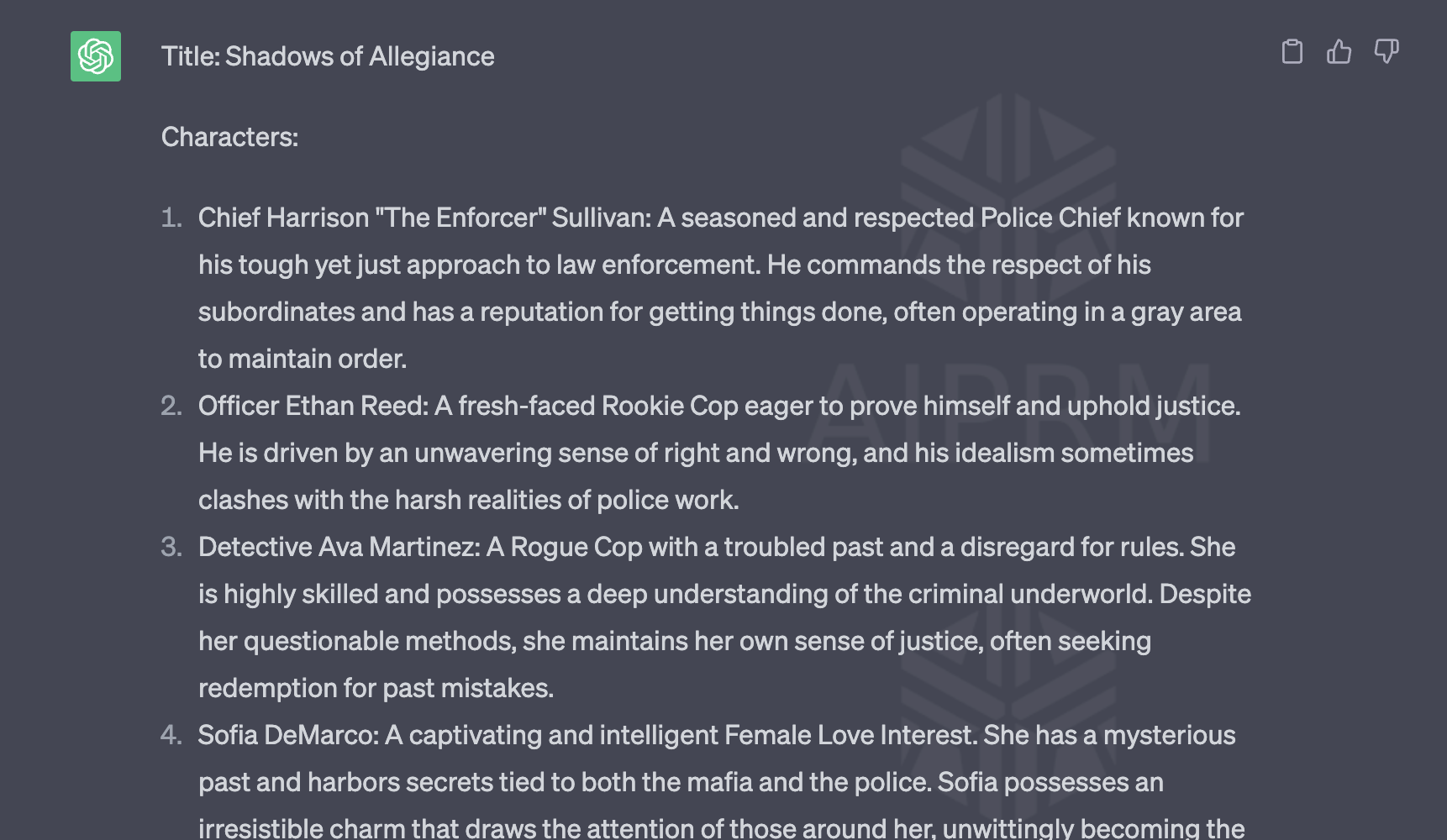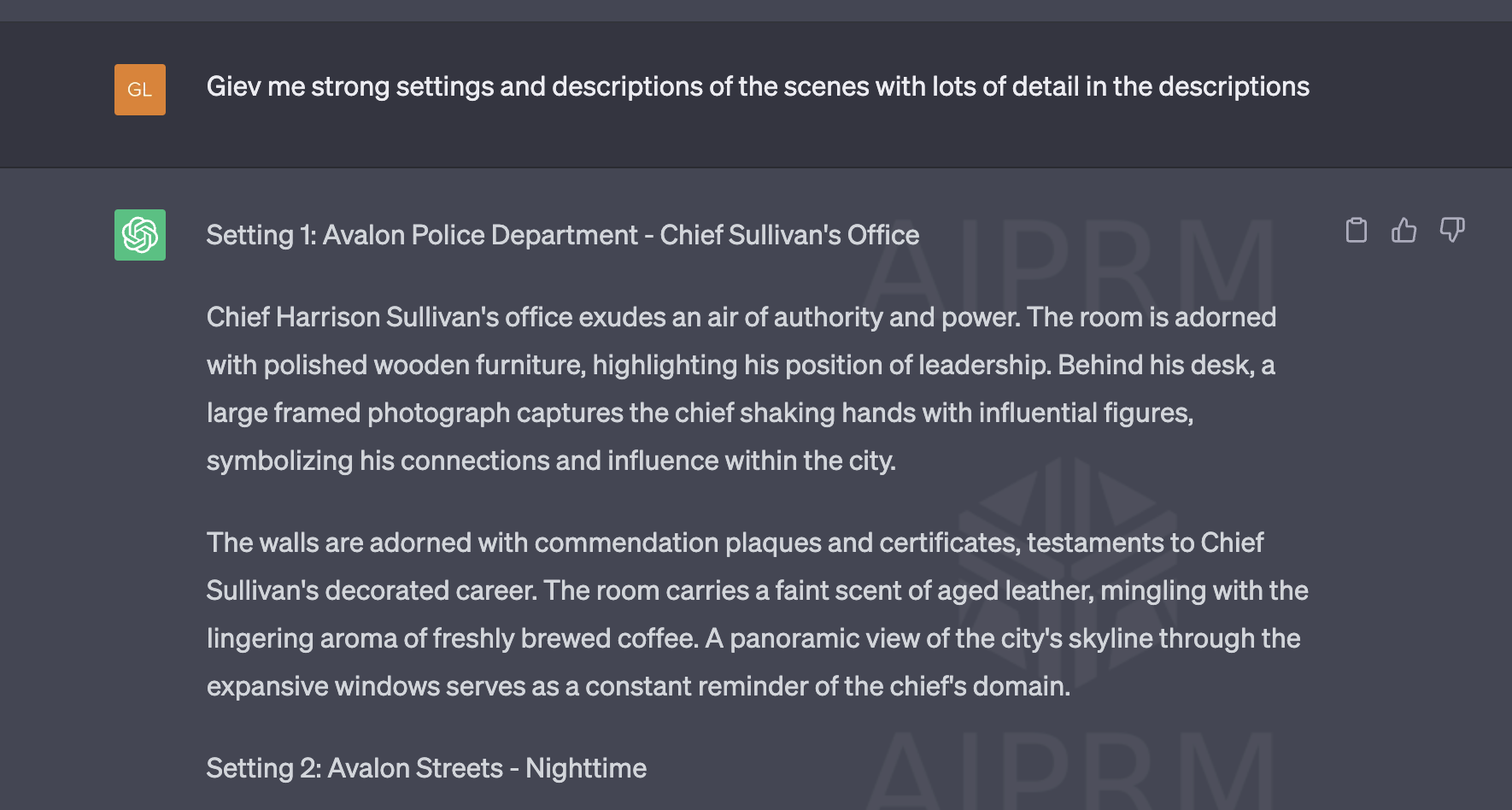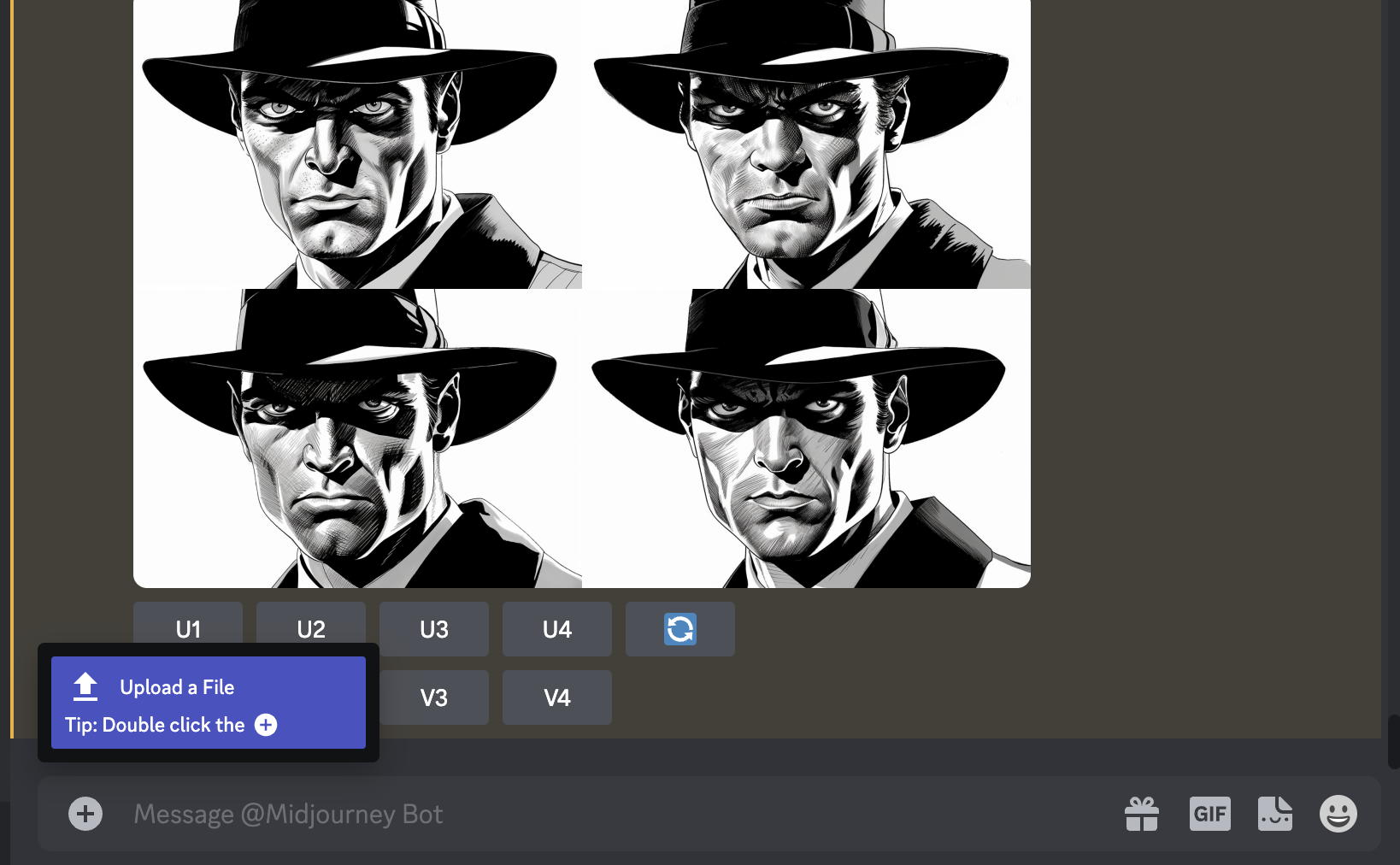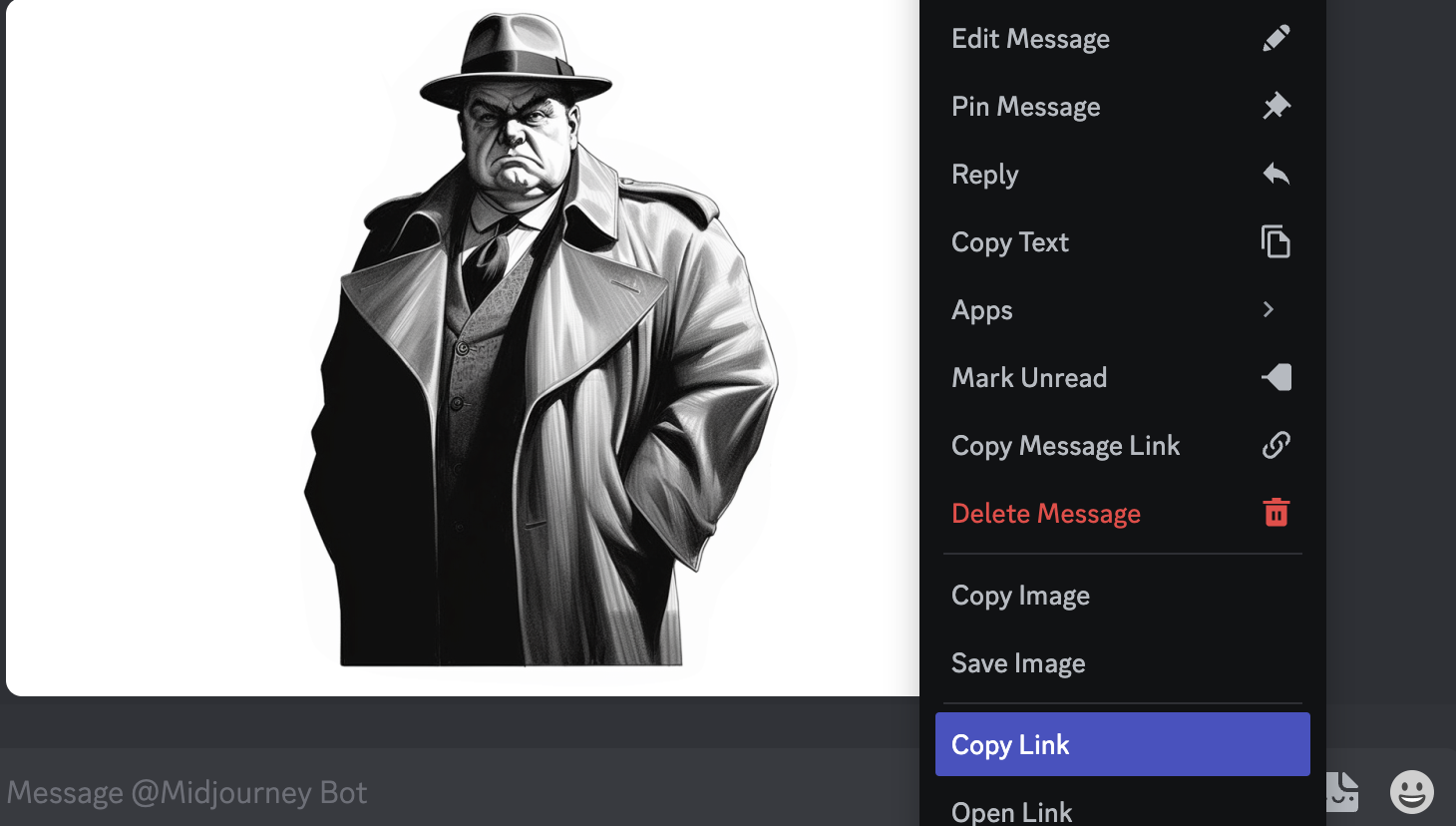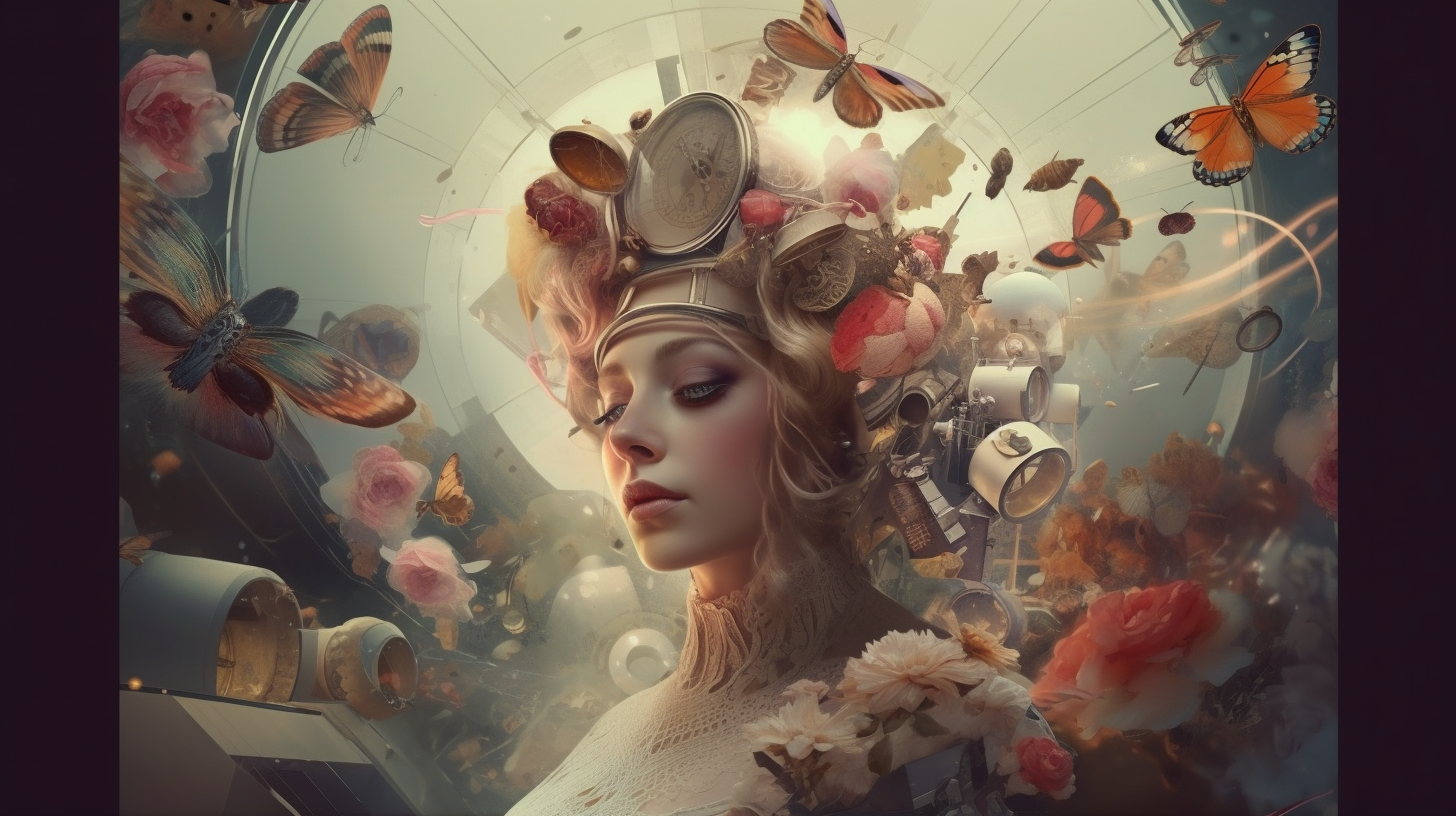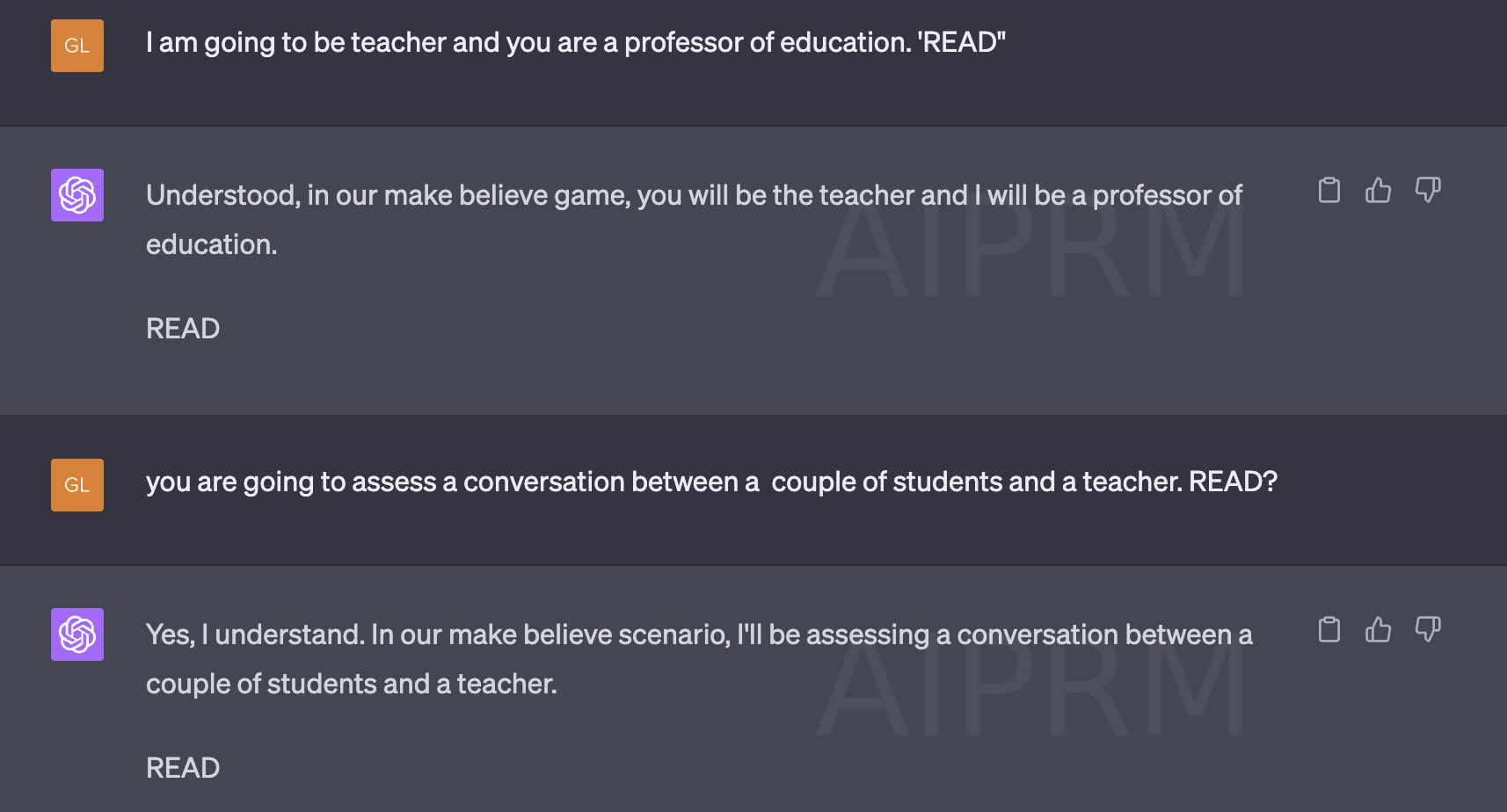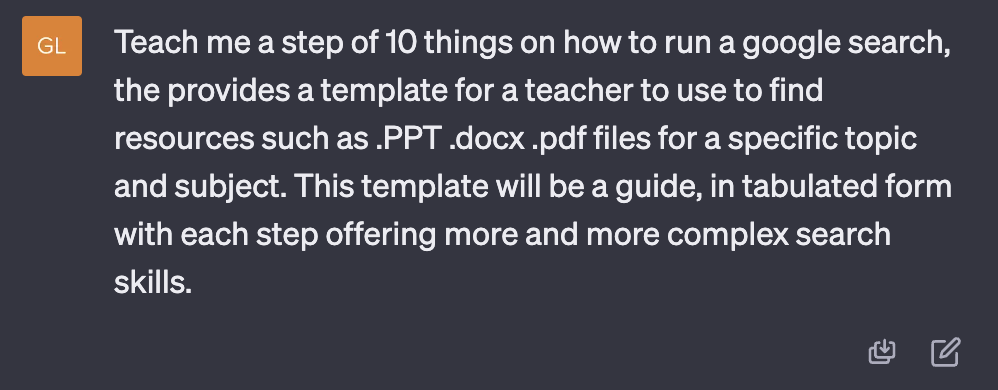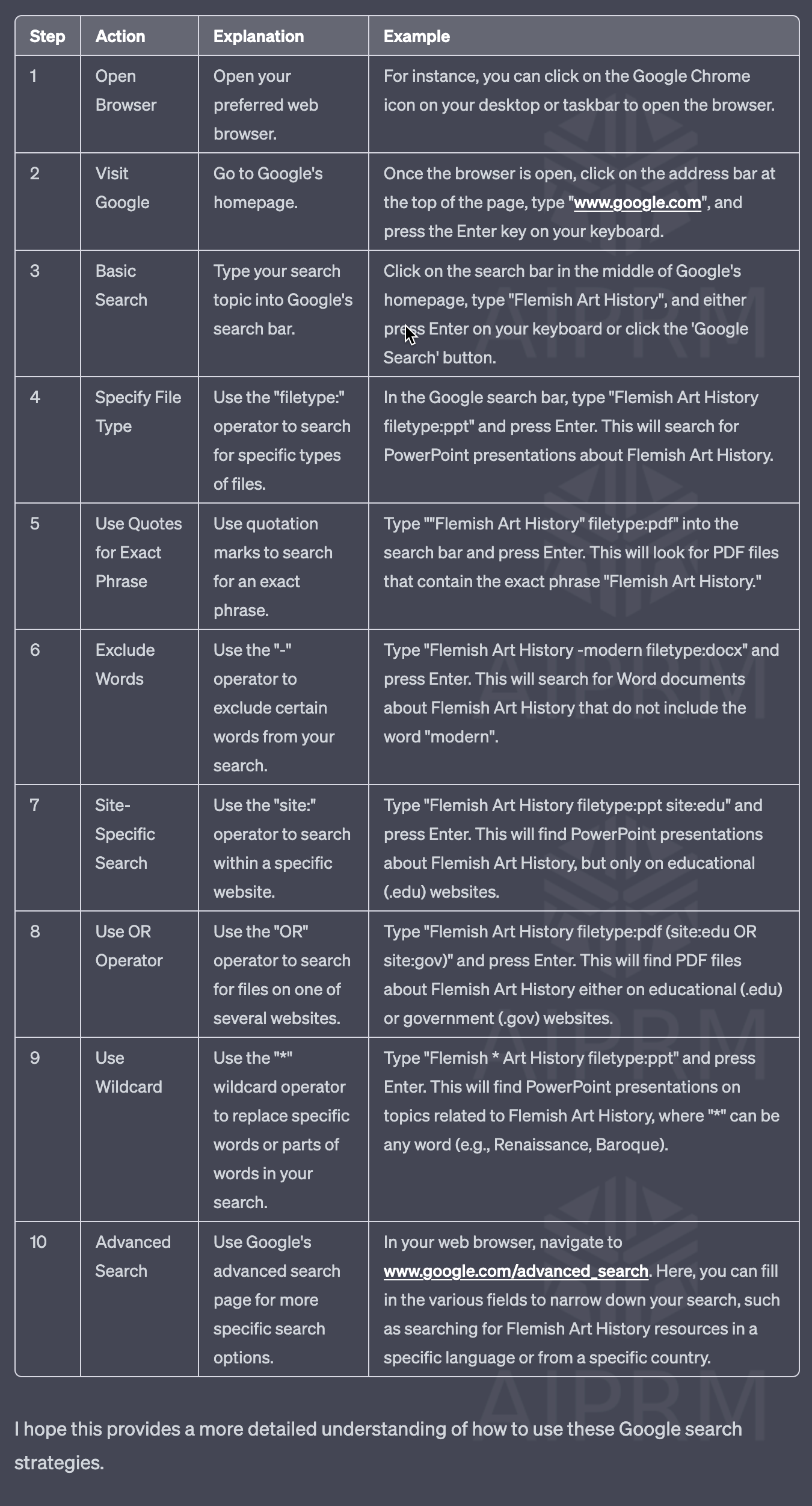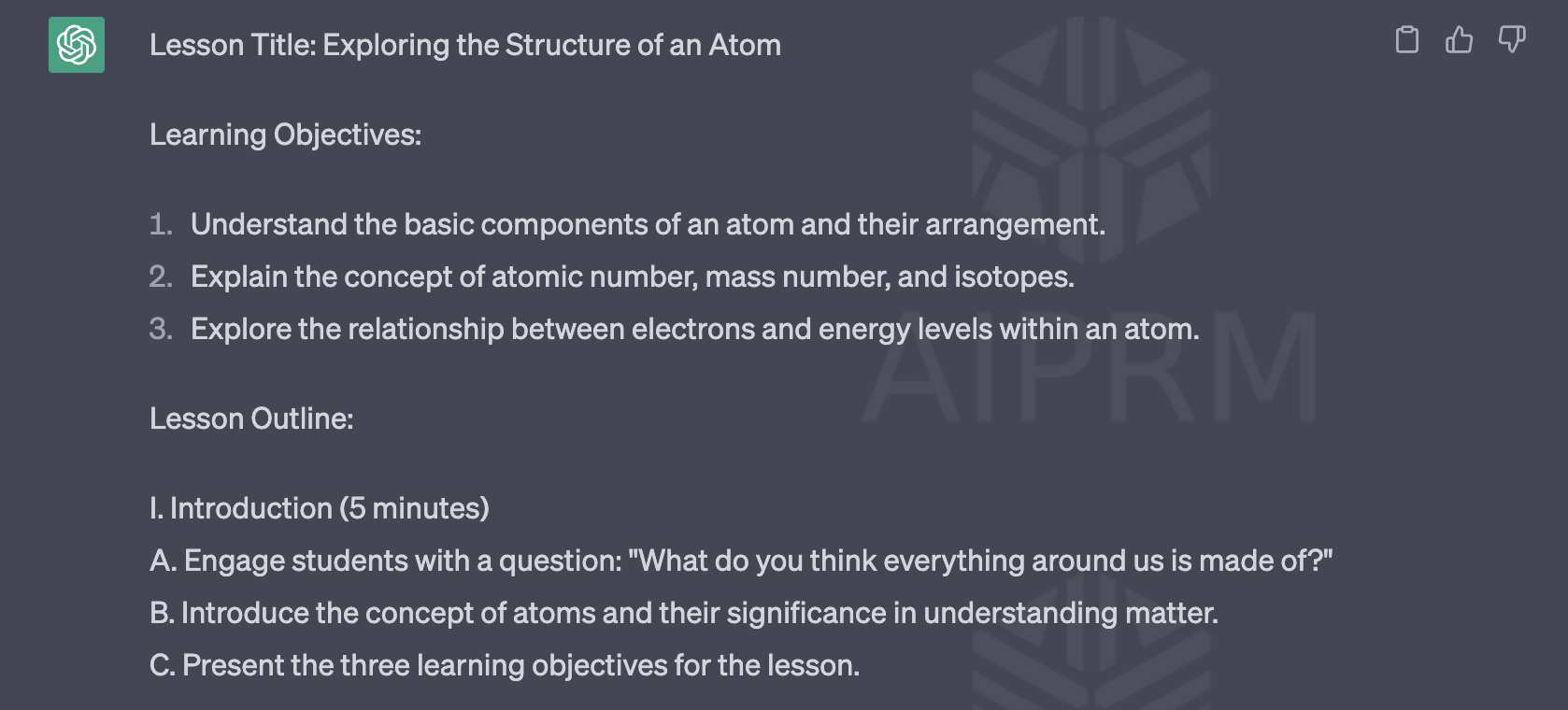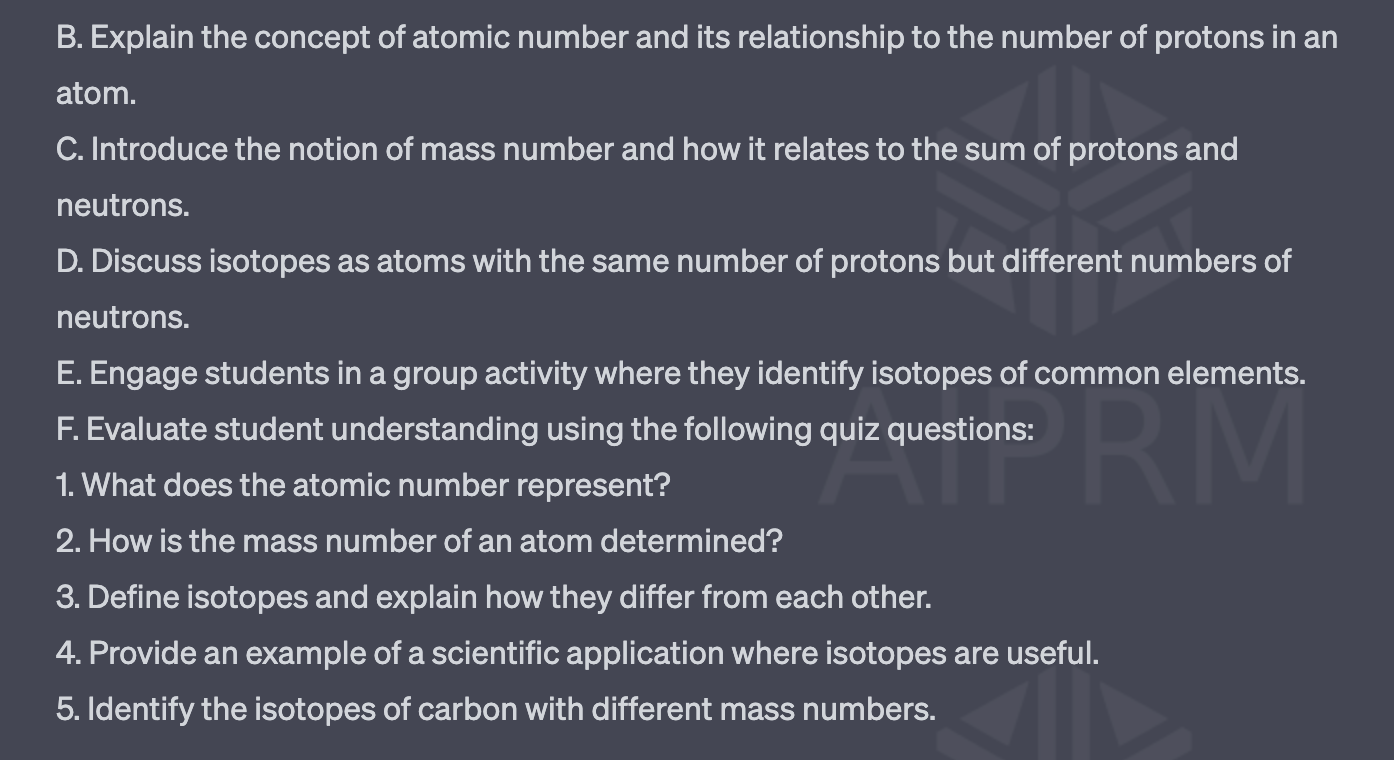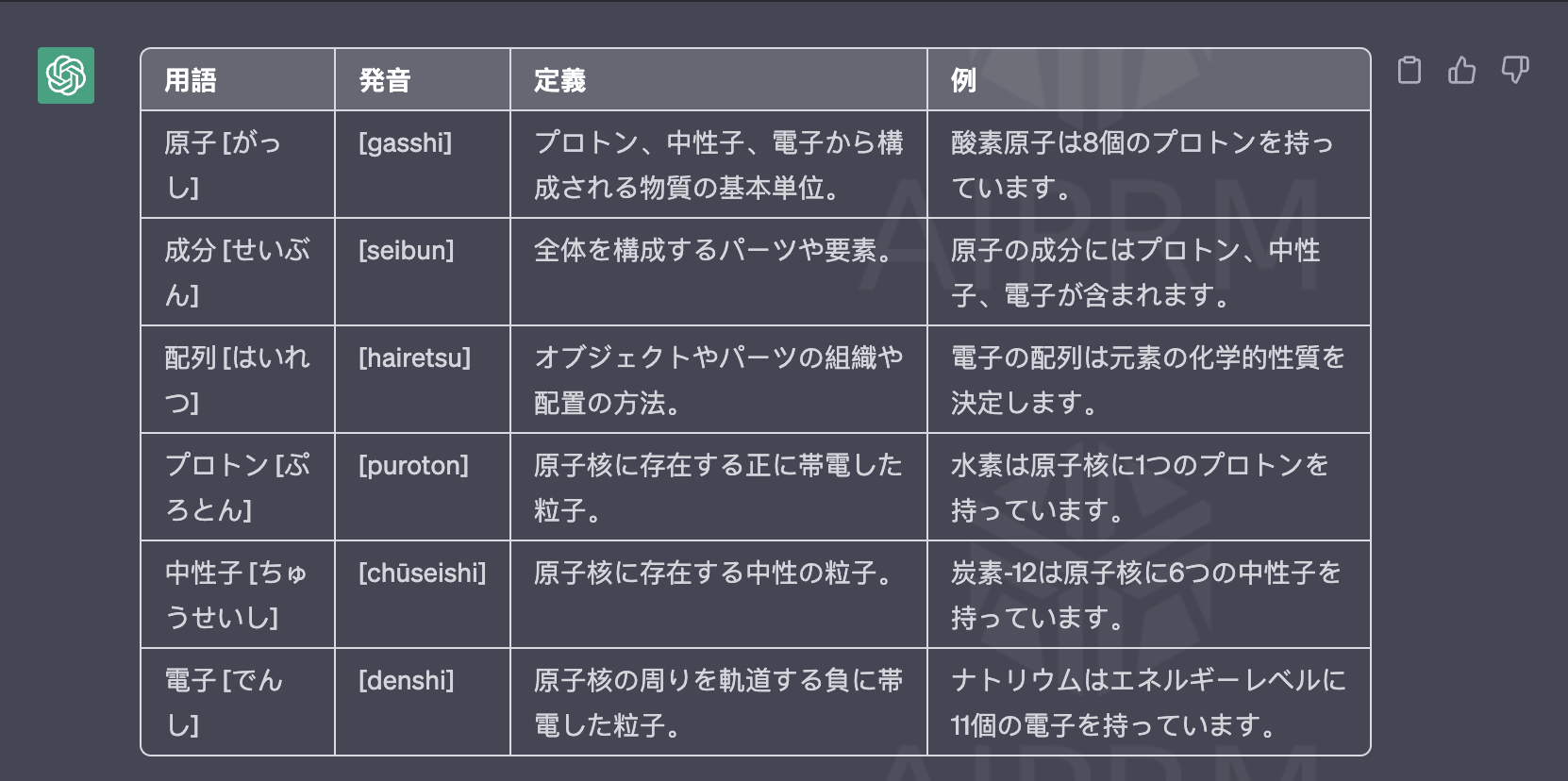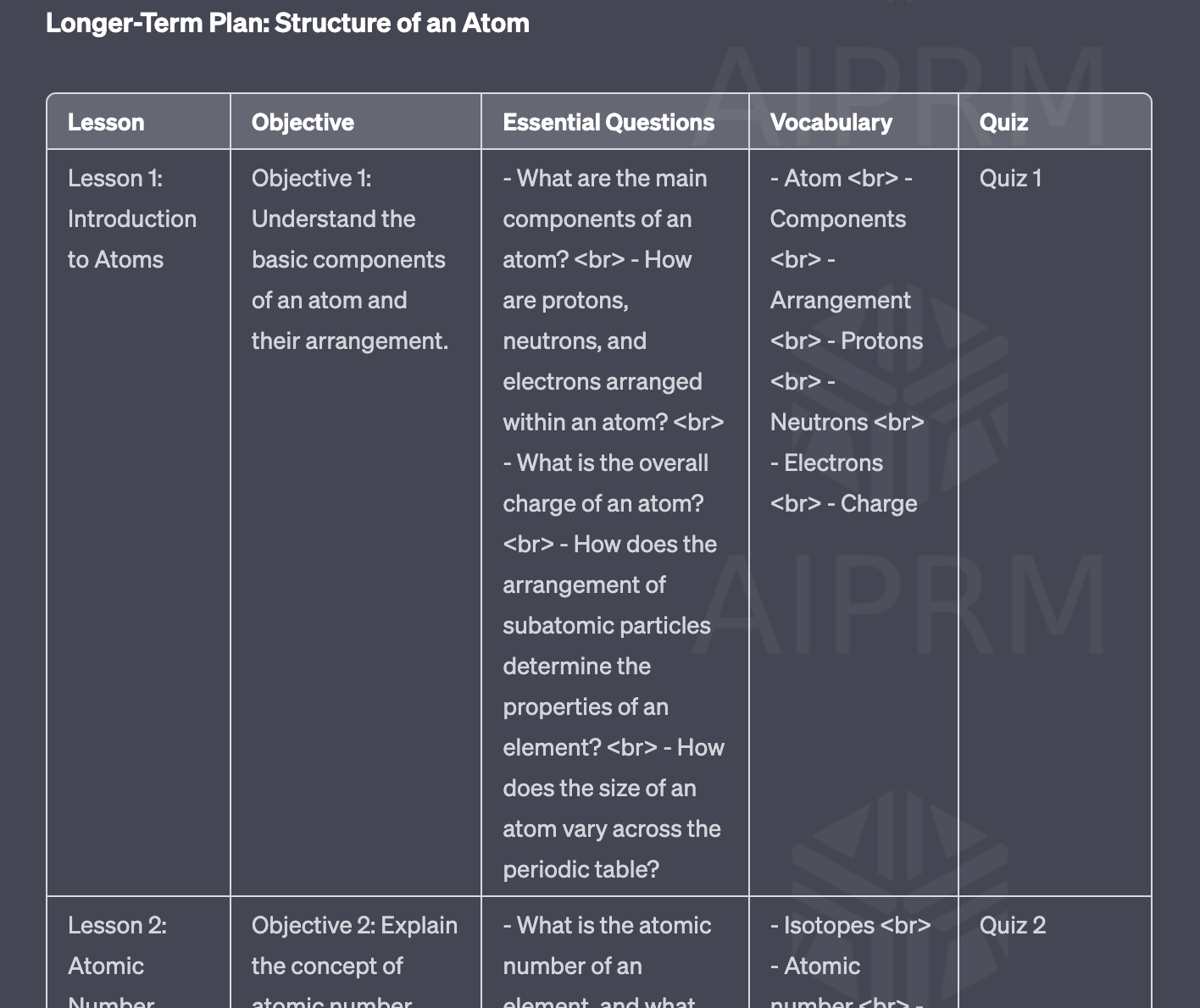If AI is going to play a role in the change of education, there must be other motivations and reasons for change. For this change to be lasting, teachers need to have ownership, be in the driver's seat, and be valued and respected as professionals. They also need to be completely aware that in the interim, AI is pretty much unregulated. In addition, there is a need for professional development and training for teachers. They need training not just in how to use artificial intelligence, but also in how to achieve their desired outcome of more engaging, effective, and challenging forms of learning.
Read More21CL BKK: AI is Not Taking Our Jobs, Quite the Opposite: Midjourney Generative Art
This is a third part to creating generative resources in the classroom with the use of artificial intelligence. In this post, we are looking at what Midjourney via Discord can do for us.
Within this post, there will be an expectation to look into signing up to platforms, using apps, perhaps paying for apps or services such as Midjourney pro or, finding free/freemium/ open source alternatives to work alongside the process here.
Some prerequisites:
Discord. Free to use and sign up via app or web.
Midjourney Discord server. Free to view and use for 25 (x 4 - each image is a panel of 4 images, 100 inn total). Option to pay $10 per month.
Photoshop or similar. Photopea is a good web alternative.
Canva: an option to 3 for editing in a basic way - cutting, cropping etc. + below
Your Operating system’s image editor.
Optional: Comic book app or creator. Perhaps Canva has non-premium content. Adobe Express has many.
Optional: Storyboard templates.
Topic or theme you are working on with children for setting and character design.
Optional movie editing software such as iMovie, CN Movie Editor, Capcut or your choice.
At my school I run several ECAs. Part of these are animation ECAs that allow the children to get away from the humdrum curriculum constraints and let the children go to far reaches of their mined for wild ideas, stories and characters.
One day we are in the ECA and there was a brouhaha from the other side of the room where some children we getting more and more frustrated with the results a search was throwing up for them. I mean, all they wanted was ‘Lionel Messi slide tackling Buddha in the penalty area’ ‘Simba as a cub falling to his doom from a cliff in the African savannahs’ and ‘Alex from Minecraft riding an actual roller coaster’.
I dawned on me that the way children want to search coupled with the way they think search should behave is exactly the way Midjourney behaves. If you don’t know what Midjourney is then it’s like this search above and it kind of generates a version of this mental imagery as a selection of four options for you to either remix and get variations or ‘upscale’ the one you like. Much like the one below. This is part of 1940s comic book theme in the style of Al Williamson. The prompt here is: Al Williamson, comic book character, 1940s, film noir, rookie cop alone, no background, black and white, --ar 1:1
You’ll note that this is different to the children’s ideas and for good reason. In our 21CL BKK workshop we will be aiming for a type of consistent theme, character, setting object or product that we can use in our classes.
You may also note that there are some numbers at the end, a ‘style’ and specific instruction for the character I want. There are panels I want in my comic, so I ask for this too. This is only so I can get a flavour of what I might want to produce later on. A bit of inspiration or a type of mood board from the prompts.
Al Williamson,, comic book set in the 1940s, black and white, detective, film noir, action shot, 9 panels, color only yellow
Discord
To do this, we need to sign up to Discord. Create an account.
Then check out some AI servers.
Midjourney
Then find Midjourney here. Click and join. You can use the App, on your device or on the web.
Once you’re in Midjourney you have 20 general chats on the side. Choose one and look around. Scroll up and down to see that people are making. Look at the prompts. Some are long, very long or filled with added extras such —seed 1233040302 or —AR 16:9 or the like.
Explore
Either way see if you can work out what they do.
Here we can see the prompt. Simple and strange at the same time.
Let’s see what you get when you try the same prompt. As a rule, when you sign up, you are only give 25 free images in batches of four. You may want try this, or look at the showcase here to get a style you like.
Then we will get some ideas for a writing project, a creative arts project, animation, computer game deign idea or story prompts for your classes.
Might be good to write some prompts of your own in your phone, text or pen and paper. Then, drop them into a prompt creator like AI PRM if you would like to get some wild ideas and use ChatGPT to help out.
See the video below and the link here for the Chrome extension.
AI PRM - Prompt Creator in Chrome for ChatGPT
Create a Character
One of the first ideas you may have is character choice. For this example I am going to set up a series of four characters and use one as a main thread here. The reason for this is that we can end up creating comics as a series of characters, poses and settings. You can skip down to see the characters in the story I’ve made up.
The hard part, as you will discover, is getting consistent characters. But we can practice on this. If you are already a user of Midjourney, then you may want to gather some characters and download the images you want. Then, collect the links to them. If you want a video - go to the bottom of this post.
In the meantime, if you are a new user then please create an idea for a character in a story.
Younger Children’s Use of AI
As you may be thinking, how can I use this with younger children, it’s hard to without an adult or older students beyond 13 years old. If you would like to use this process with younger children in class, then perhaps Craiyon.com might help you.
From this prompt in Craiyon.com: al williamson style, black and white, 1940s, film noir, comic book character, rookie cop alone, full figure, standing facing front, no background, white paper, we get this result. Not quite the same but usable all the same as a storyboard or a starter character at least!
Making a Character
Let’s move on…
Things you need now are these:
character idea: man, woman, beast etc.
style: painting, comic book,
Artist style: Dali, Yayoi Kusama, Roy Lichtenstein, Bauhaus, 17th century Flemish, 21st century realism etc.
Colour choices.
Expressions.
Clothing: hat, cloak, chaps…
Character description: stopped, fat, thin, laughing, jolly, morose etc.
Background style: (below I have made a white backdrop as it’s a character sheet). Plain, busy, patterned, Fleur De Lys, Jungles, Desert, Frosty Tundra. Experiment, but for this exercise I am showing character only until later.
For this character introduction, we will only use a character sheet. The reason why is that we can download the one we want trim it in an editor and re-use it. The other reason here, is that we are training the generative part of the AI to understand what we want. This will allow us to keep this as consistent as possible and this is key if we are to make a series of character poses.
Once you have your idea, go to Midjounrney and in the sidebar, where it has #general-20 (any one is fine), and type: /imagine + your choices.
I typed this: /imagine woman comic book dali style red dress bouncing curly hair happy and jolly walking white background character sheet
Of course, you can bow out now and play with these selections if you are new to this. For those who have used this, then please carry on reading as I am going to explain the options we have and why we need to keep track of this as it develops.
Going Further
Above, we can see the part finished image with about 20% finished. You can see though that the character is clearly coming through with the clothing and shape on the white background.
The video below, you can see that I am using the MidJounrney app on Mac, I’ve chosen the #general-3 channel. In here you can see my prompt: /imagine woman comic book dali style red dress bouncing curly hair happy and jolly walking white background character sheet
The image is fine for an introduction and will set you off if you want to follow this line of characterisation. As I've mentioned above, I am making a comic, and I want to make a 1940s style comic, so this means 7-9 panels. As you can see above too, I have used MJ for inspiration. I also researched some prominent artists of the time and found that Al Williamson’s style is what I like. I like the story lines he was involved with and I will stick with this.
The Interface
You will notice that there are these buttons under your image. These have specific actions. There are options in you right-click menu too that are quite important. In the image above, you can see U1, U2, U3, U4 - these are your upscale buttons. These move left to right from top to bottom. So the lady with big red hair bottom right is U4 if you want to upscale that one. The blue remix is to make more of the same prompt but with differing styles. In this instance, you may not get much variation.
The V1,2,3,4 are variations of the the images using that as your style. This is great for your consistency and worth trying out so that you can get a better and closer variety of poses and clothing choices. In the images below, I am making a Police Chief for my story. In the first image, I liked the one with a shorter tie to show off the round belly and the high waistline of the chief as he looks both bumbling but underhand.
Getting Consistent for Story Making
Adding your image to your Midjourney chatbot, you need to right-click on your image, and use the ‘envelope’ emoji from ‘add reaction’ if not there, to post it to your DMs.
You will notice in the prompt I have, that there are some words and letters that are preceded with -- this is a signifier for the image delivery: aspect ratio, version of generative AI within Midjourney and, here you can see the word —seed with a number. This is because I have used a link to the image I made earlier and it has a reference within MJ that is called a ‘seed’. We don’t need to worry about this. But the —ar 3:2 is the aspect ratio or the forma the image is shaped in. 16:9, for example, is HD video, 5:7 is photographs and some films, Raiders of the Lost Ark, Matrix or Forest Gump are 21:9. 1:1 is Instagram… This will help you later when you are thinking about where this is finally been seen, if at all. For a comic book, this is paneled therefore, depending on the the frame, it may be 9:16, 3:2. 4:16, 12:4 to get the feel of the story line and impact.
What I am going to do now, is make a whole bunch of characters on character sheets. Then download them. To do this, you need to run the process above, maybe experiment with - -ar 3:2 and dress your character in the clothes for your story/ journey. See the galleries below. Panel sets and characters.
Characters and scenes from 9 panel comics.
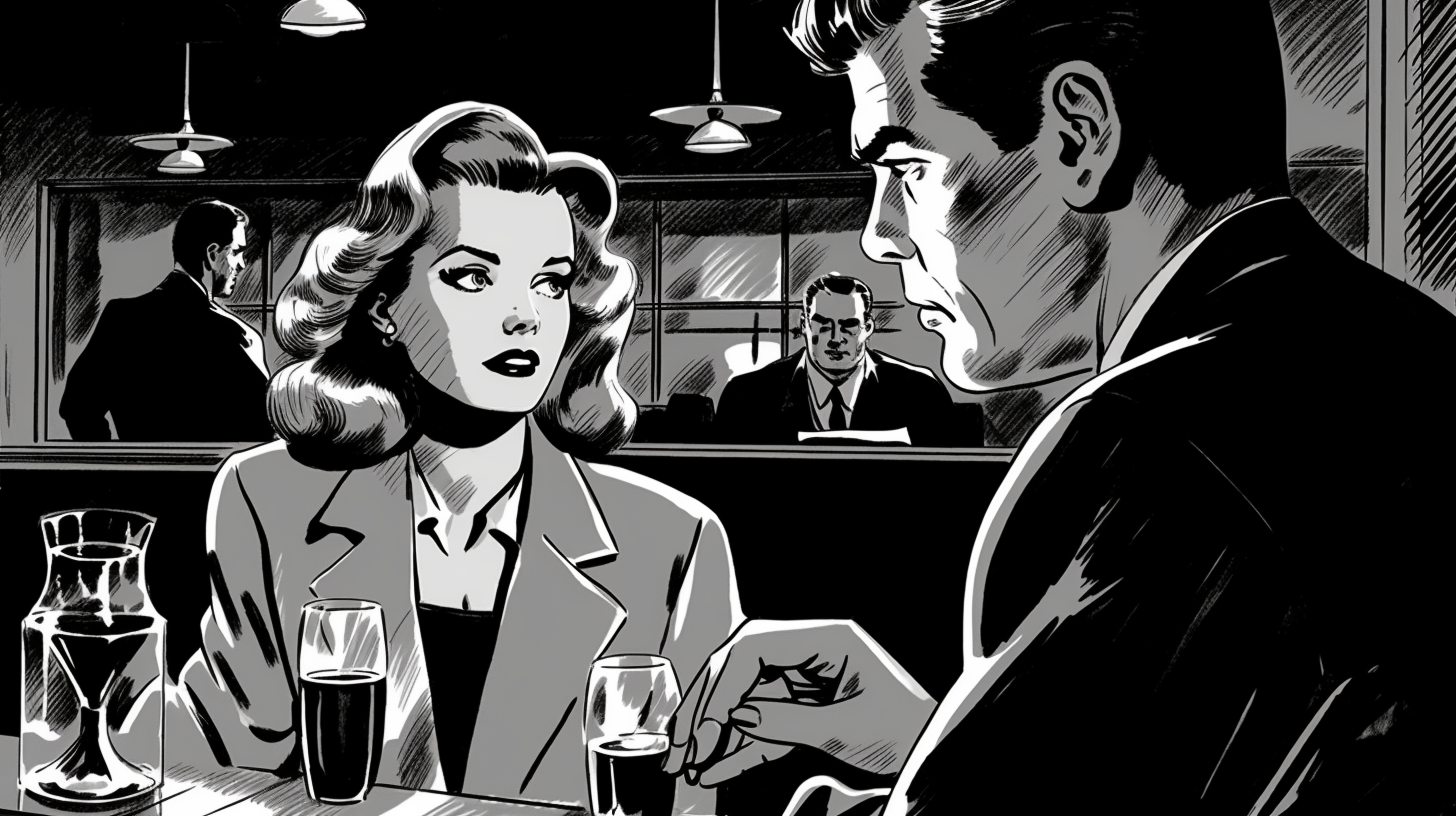
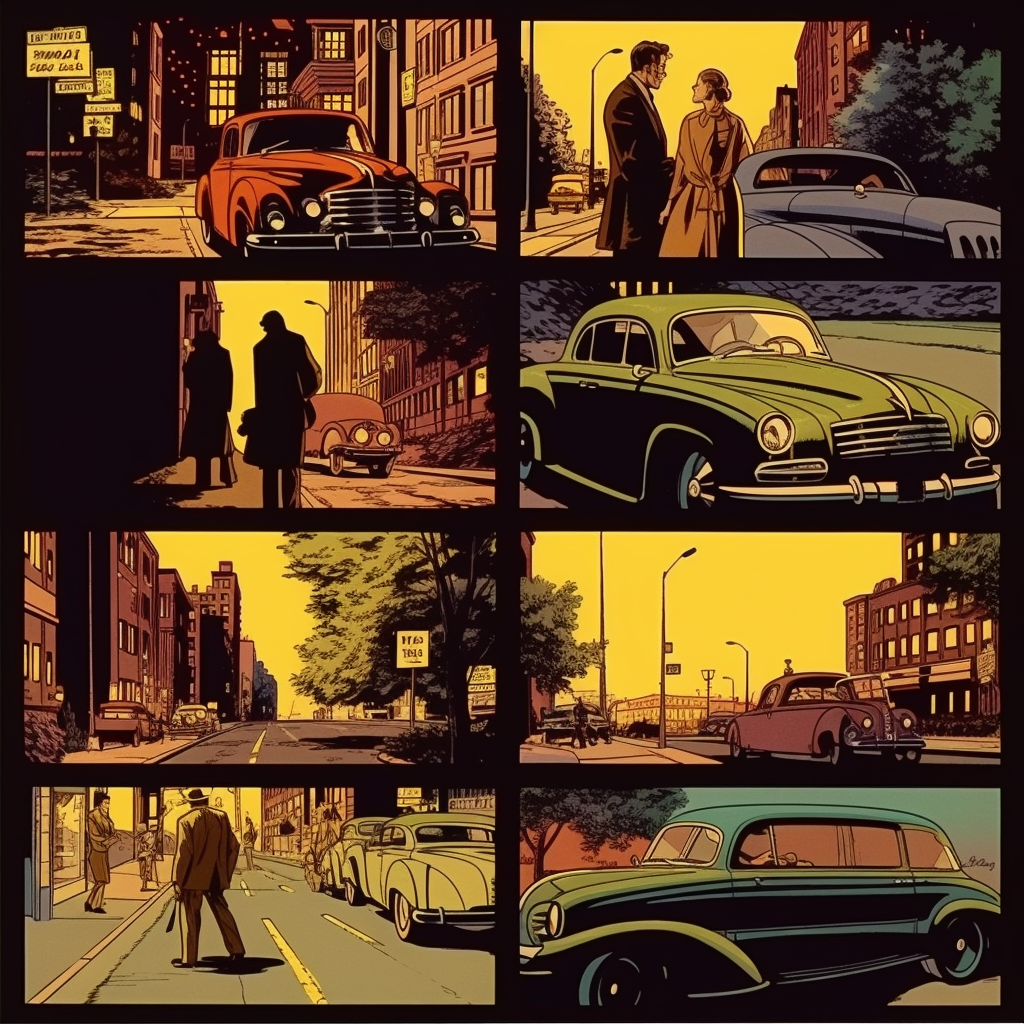
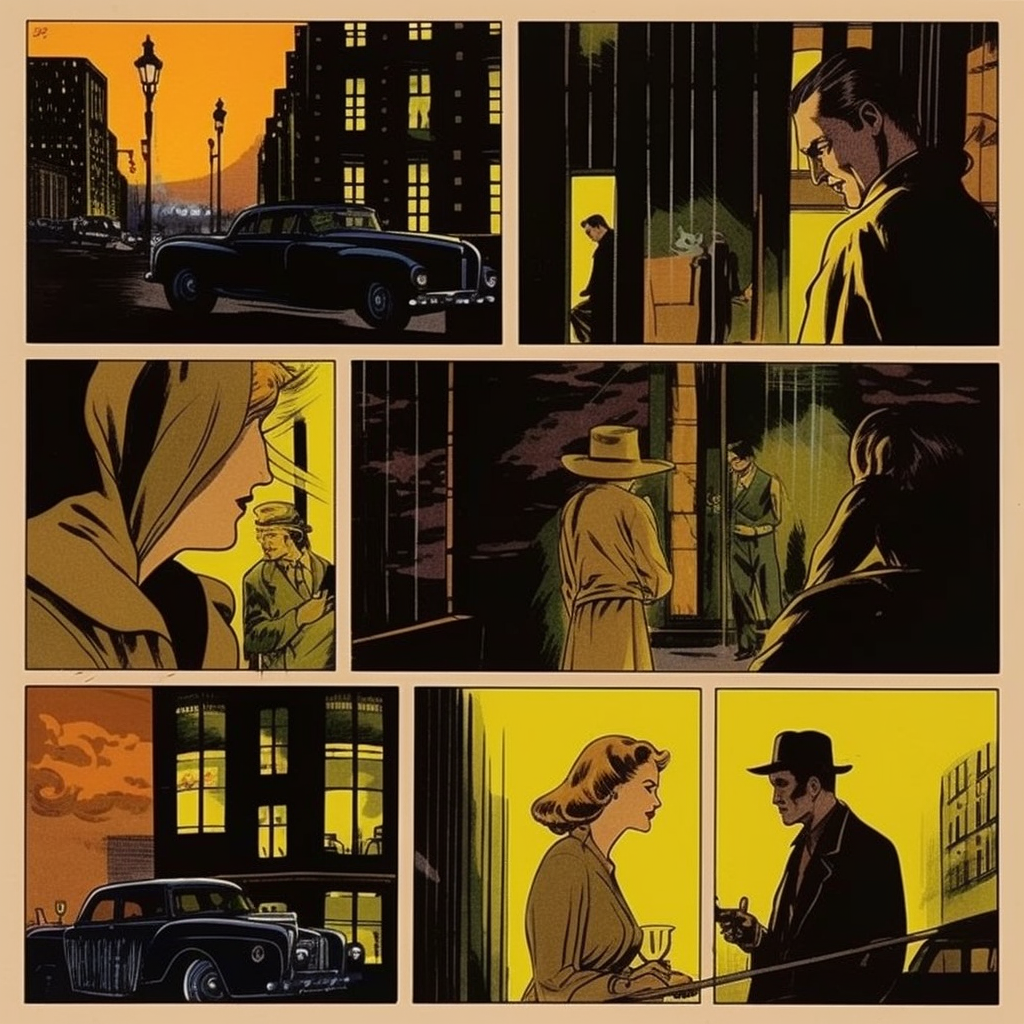
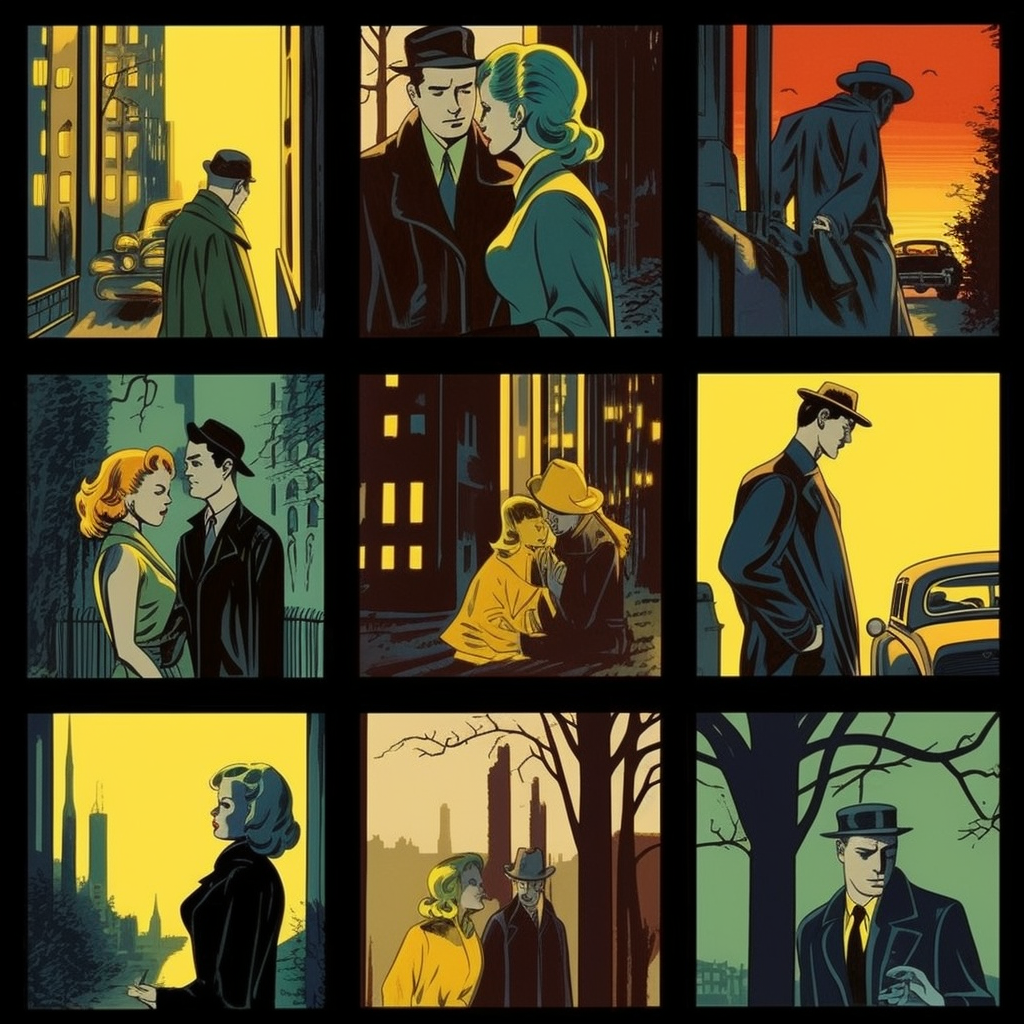


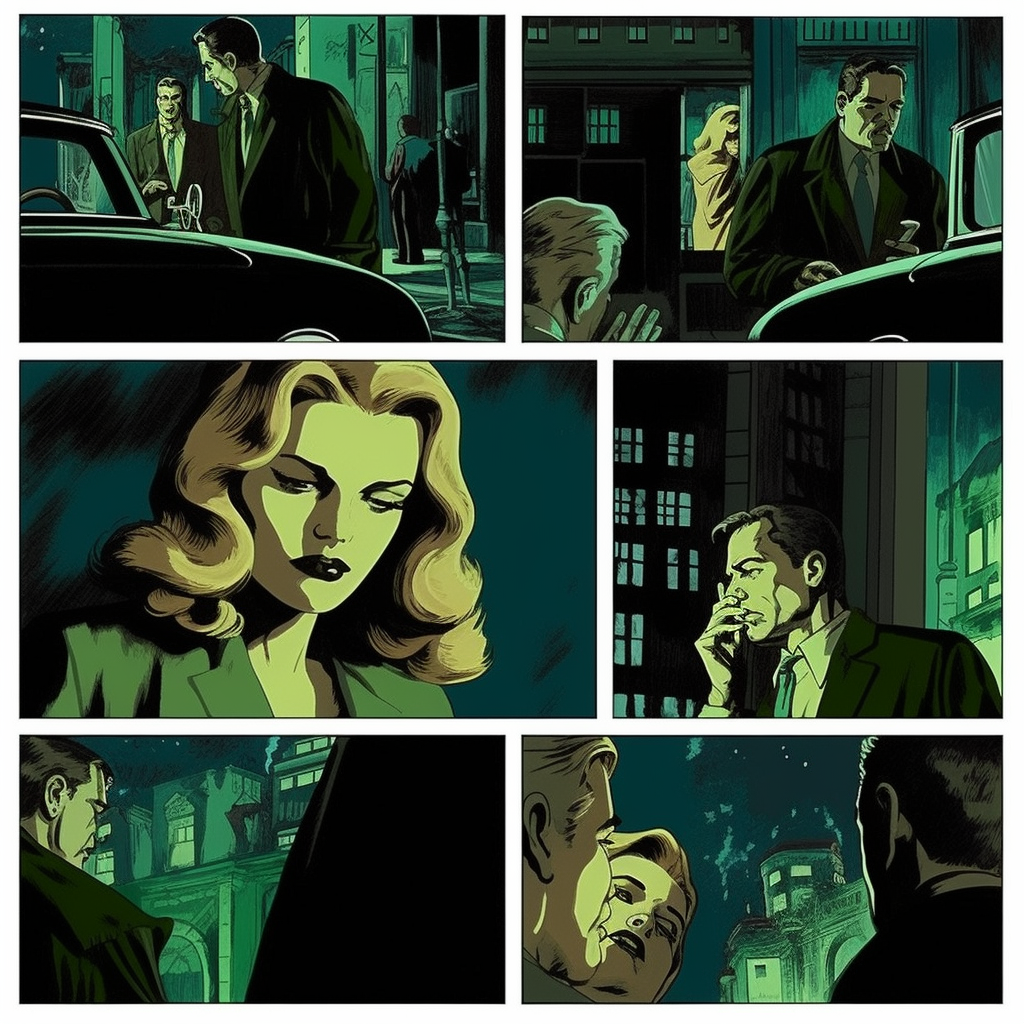
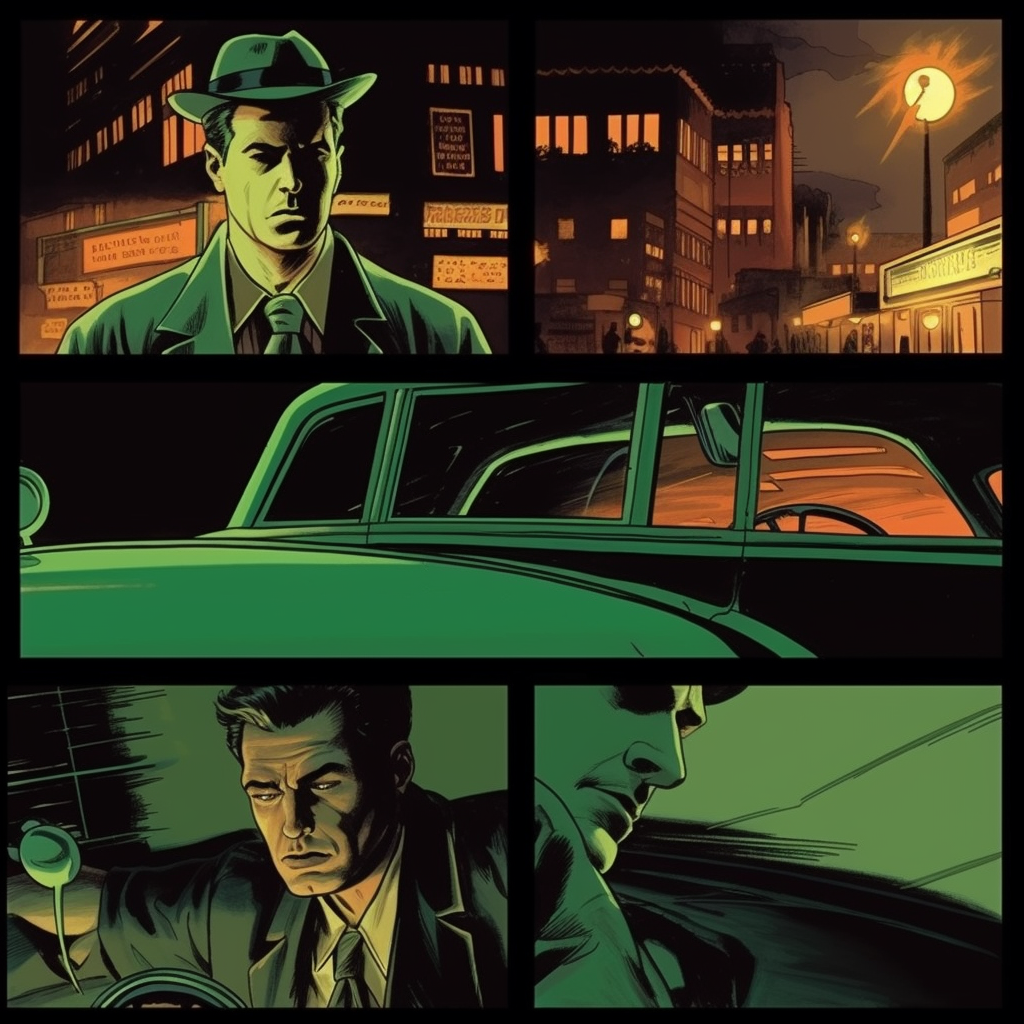
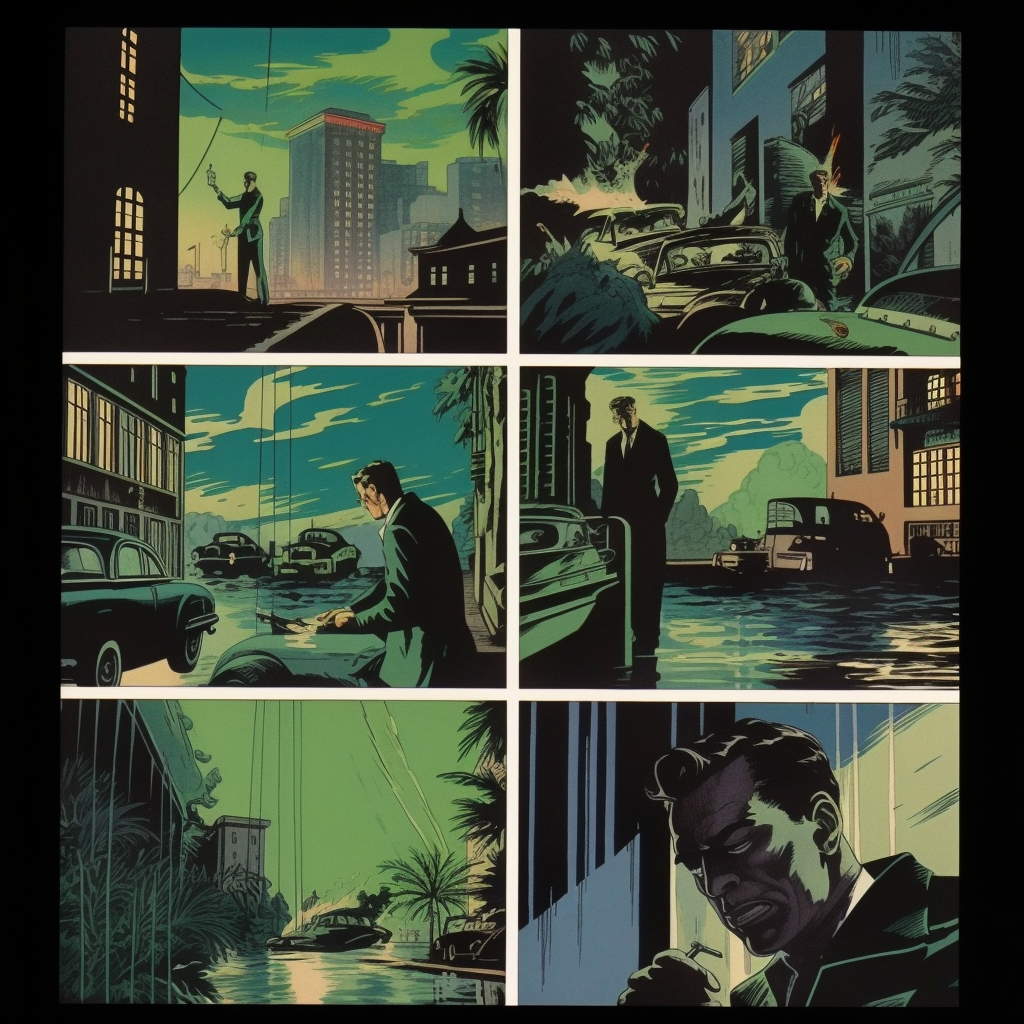
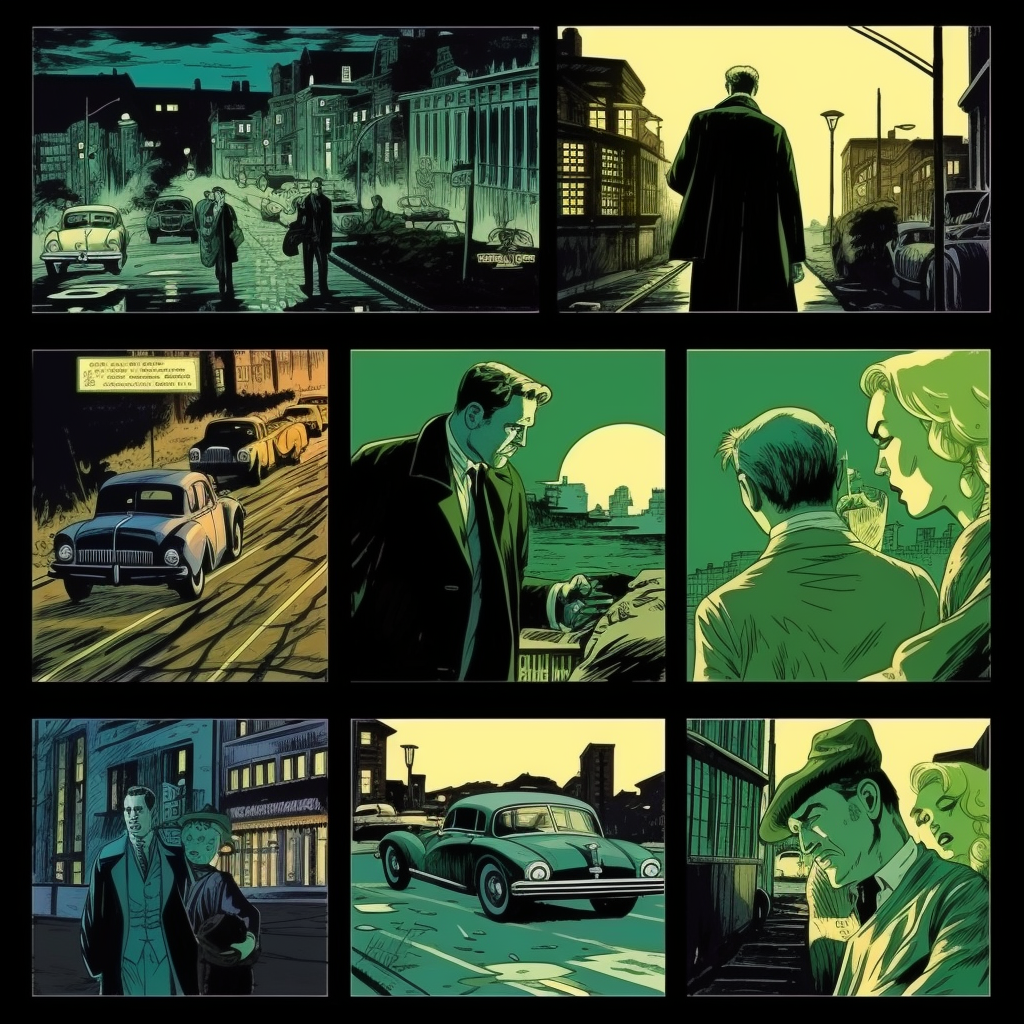
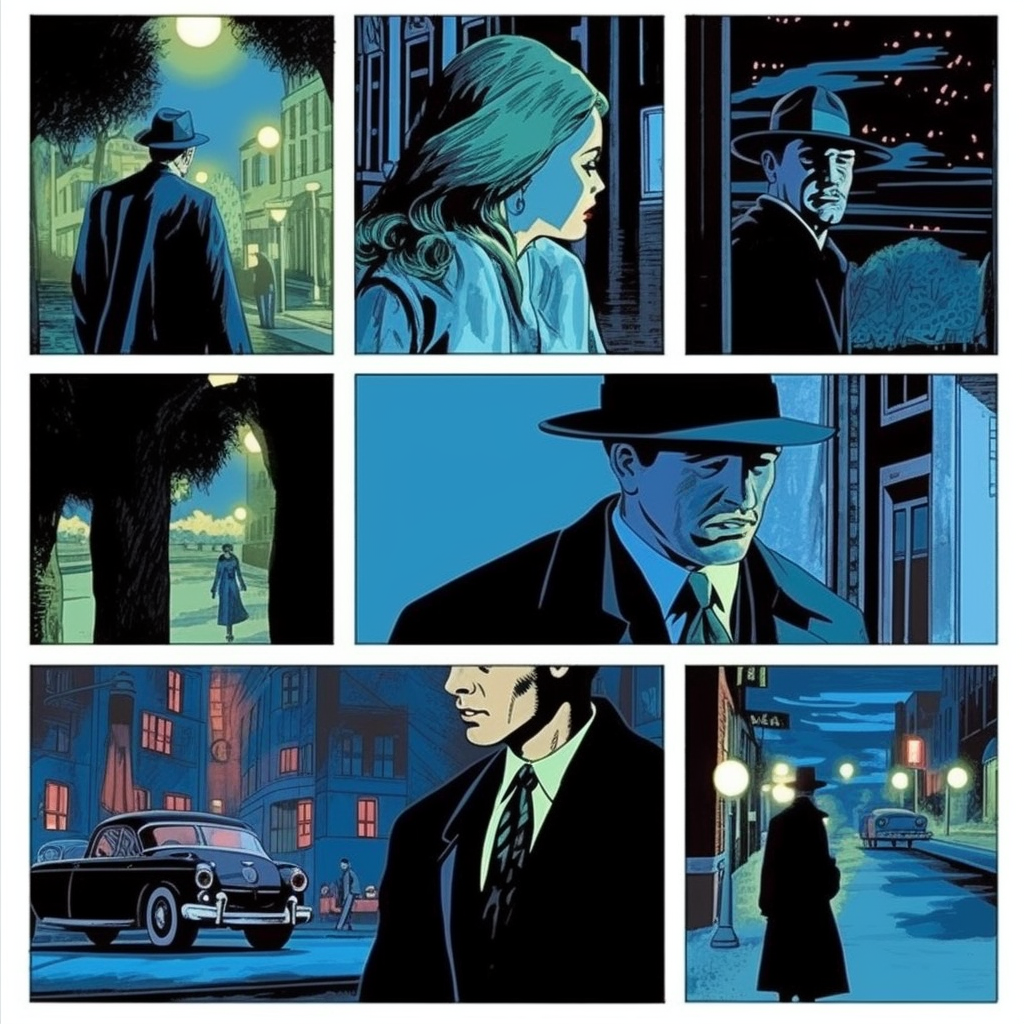
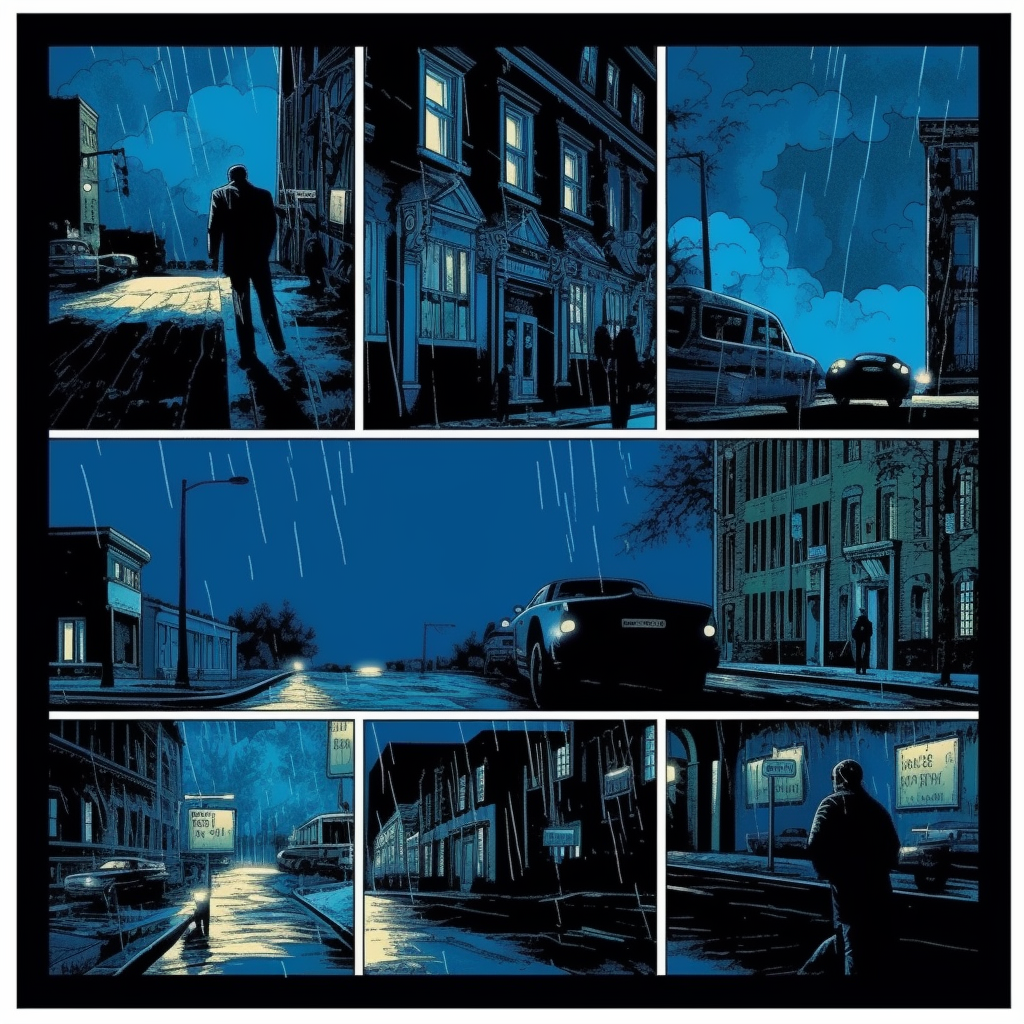
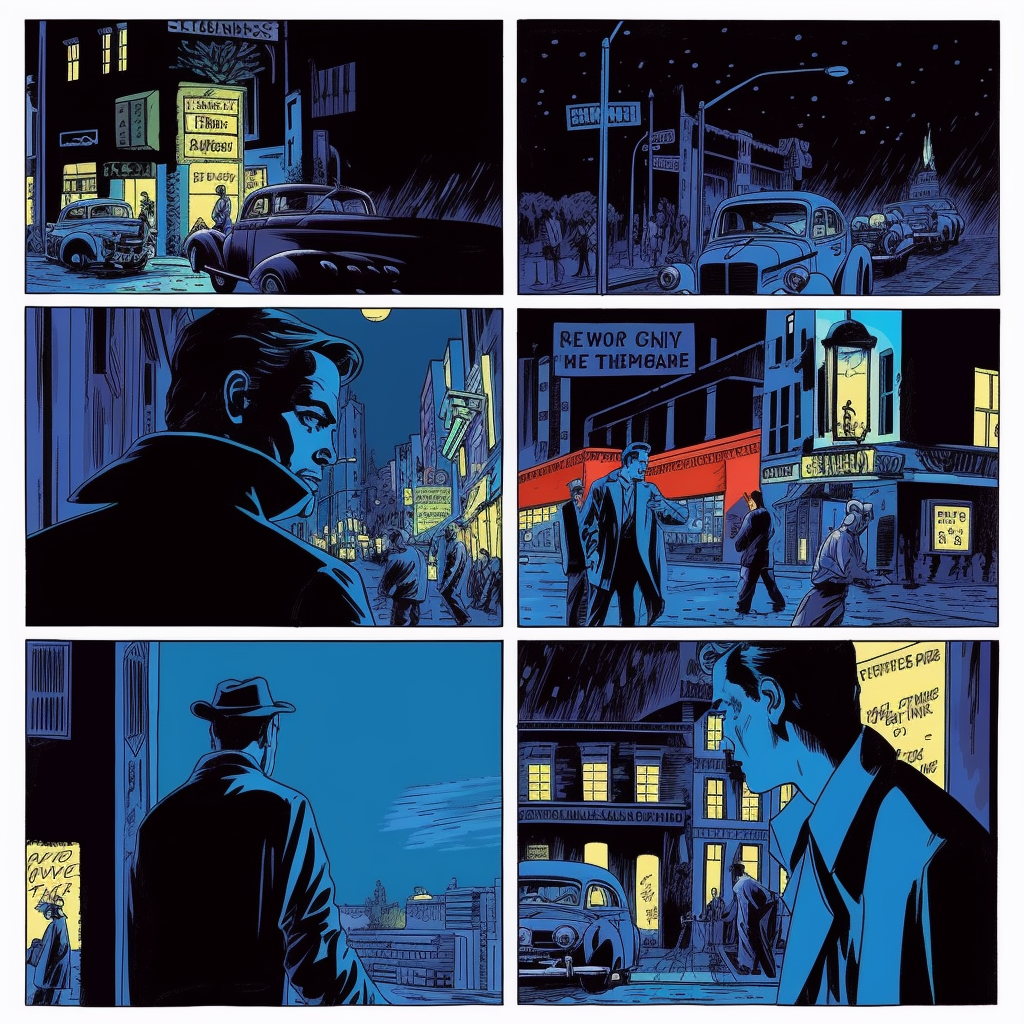
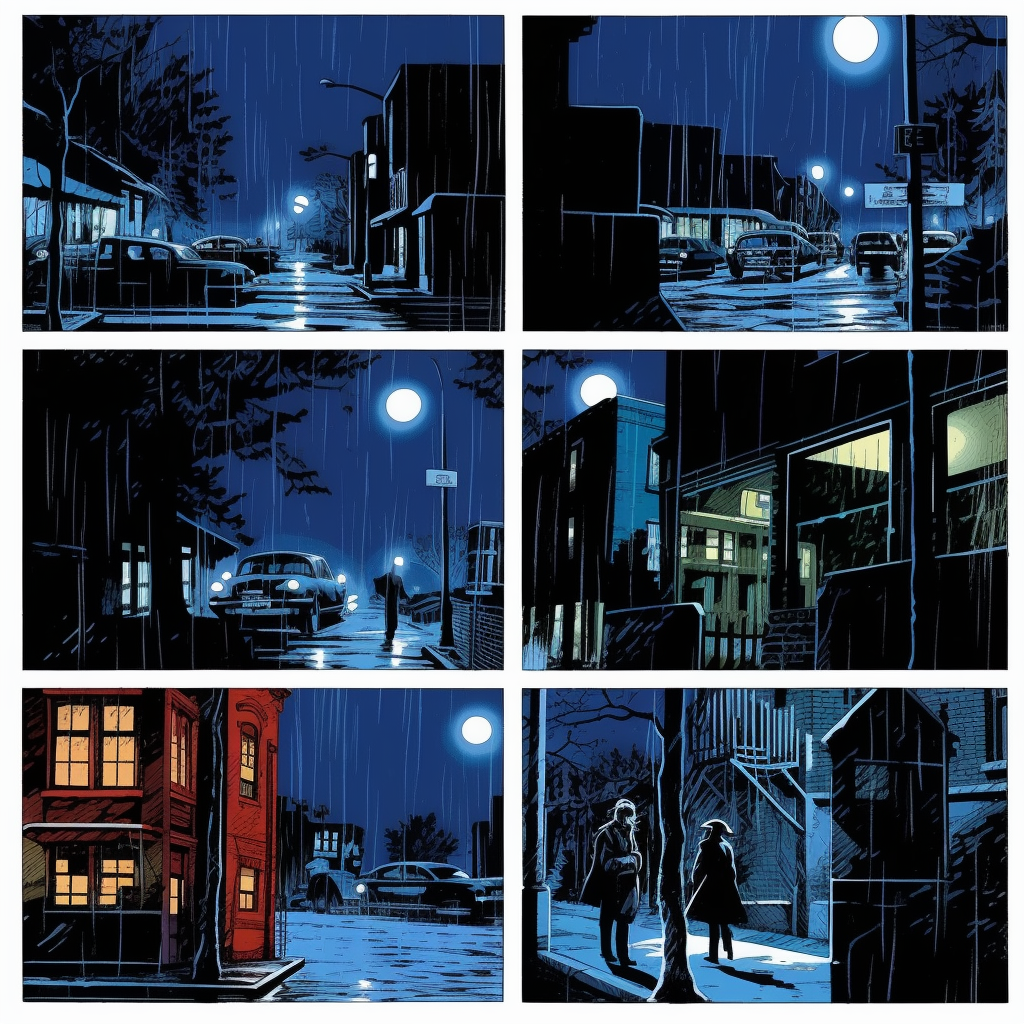
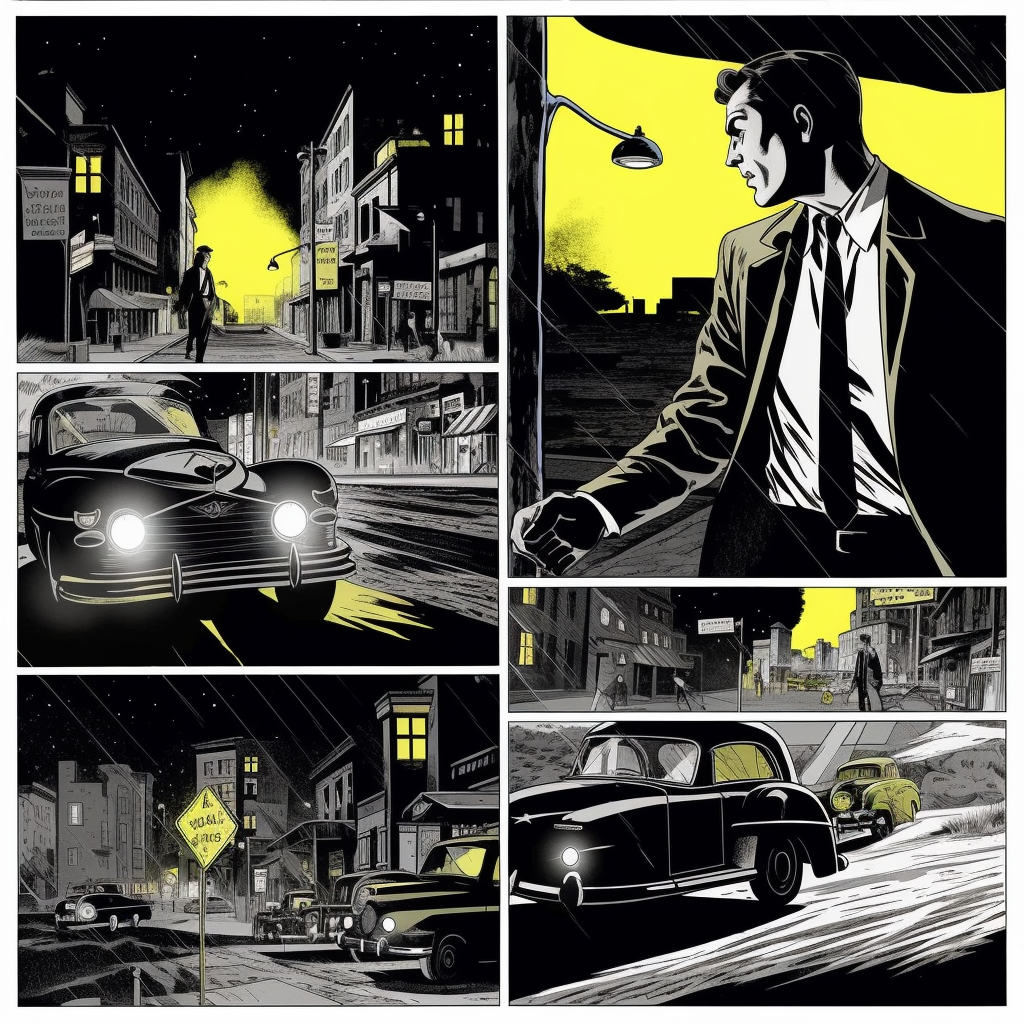
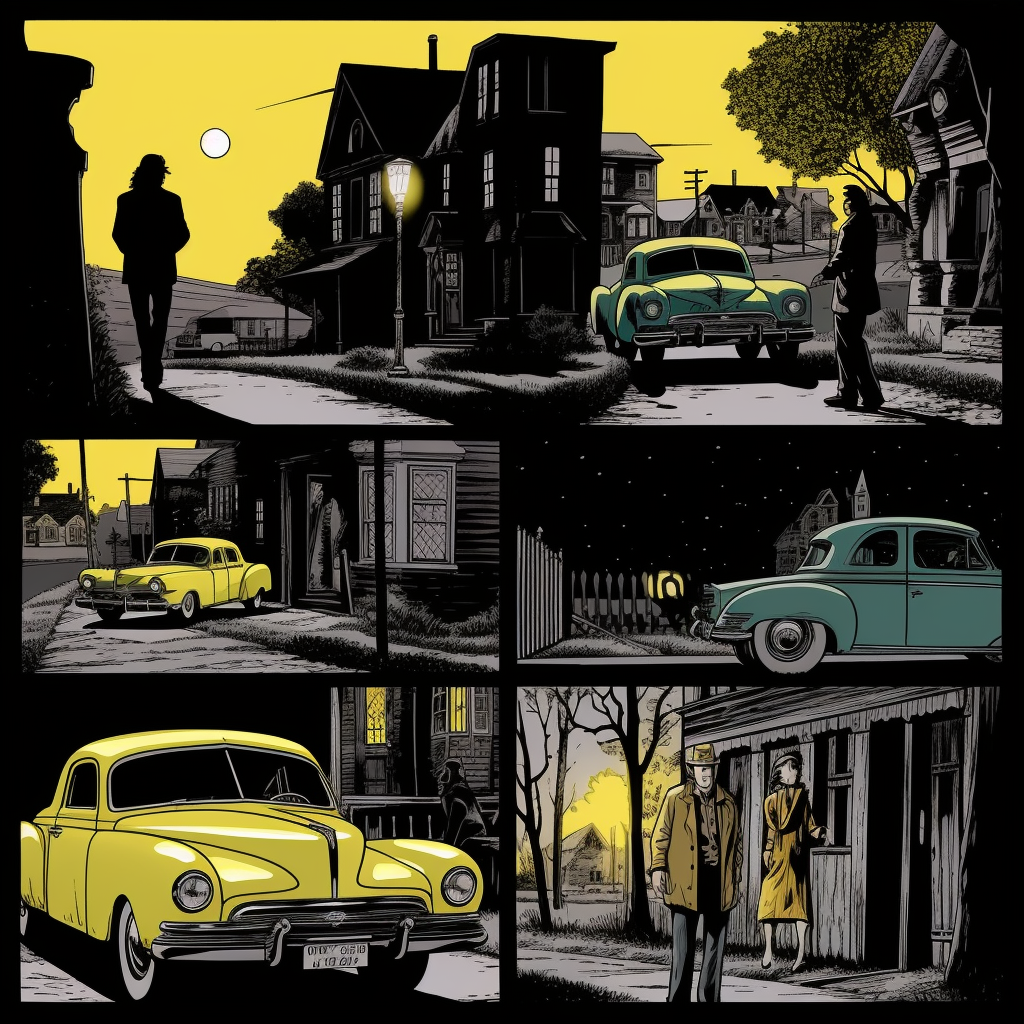

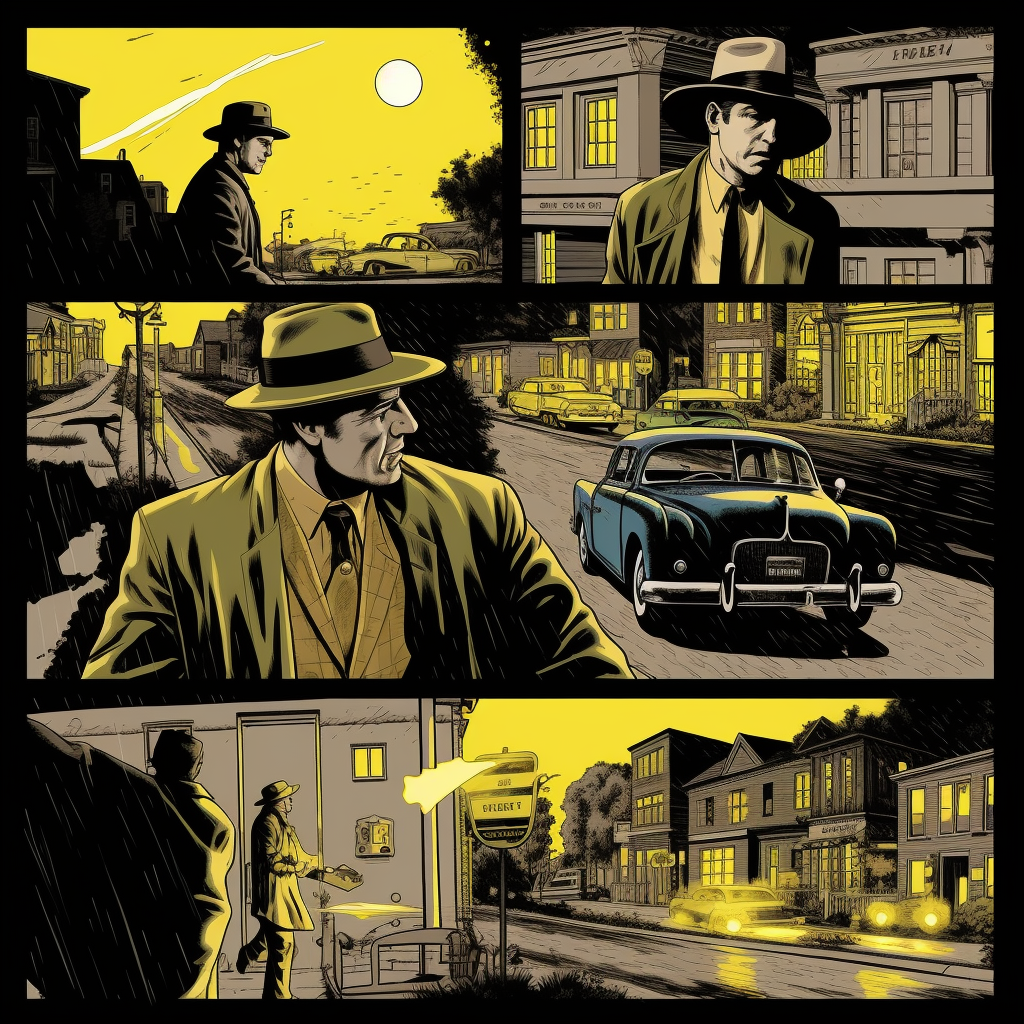
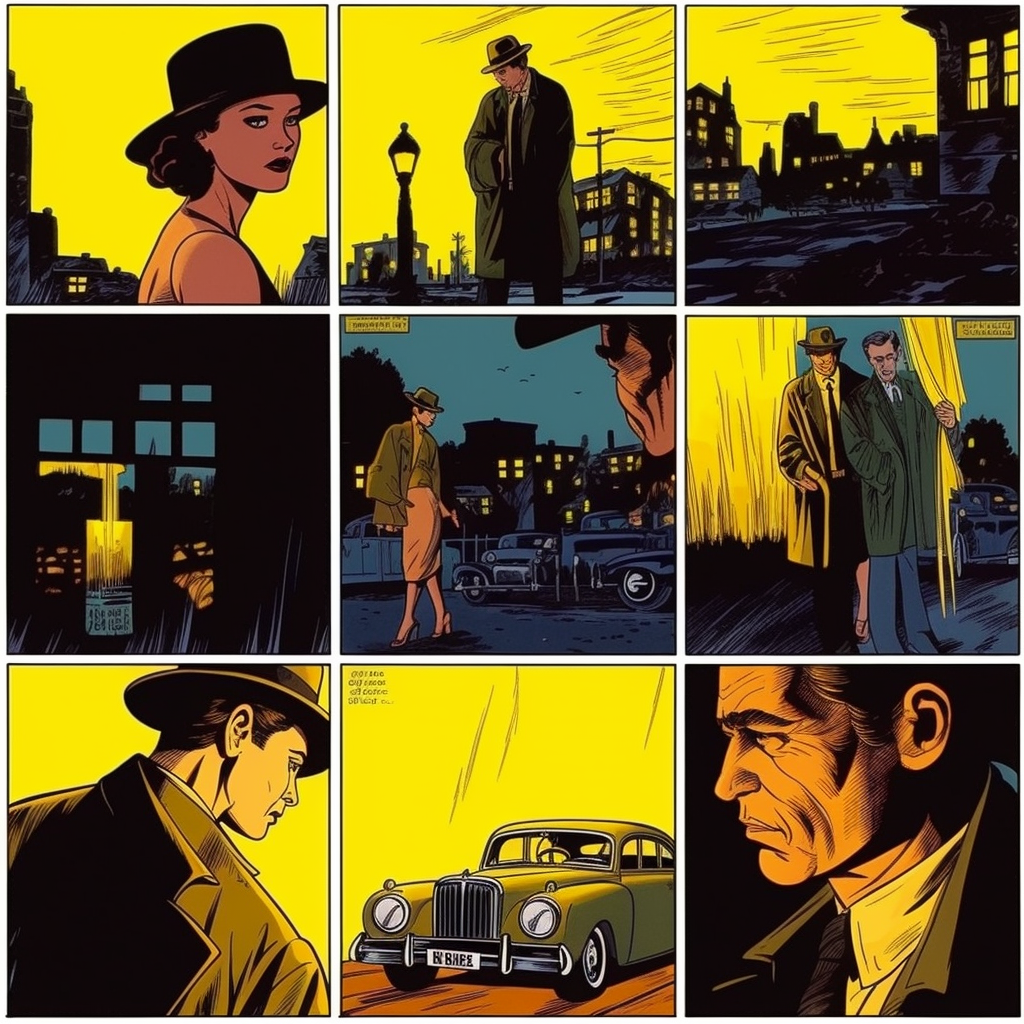
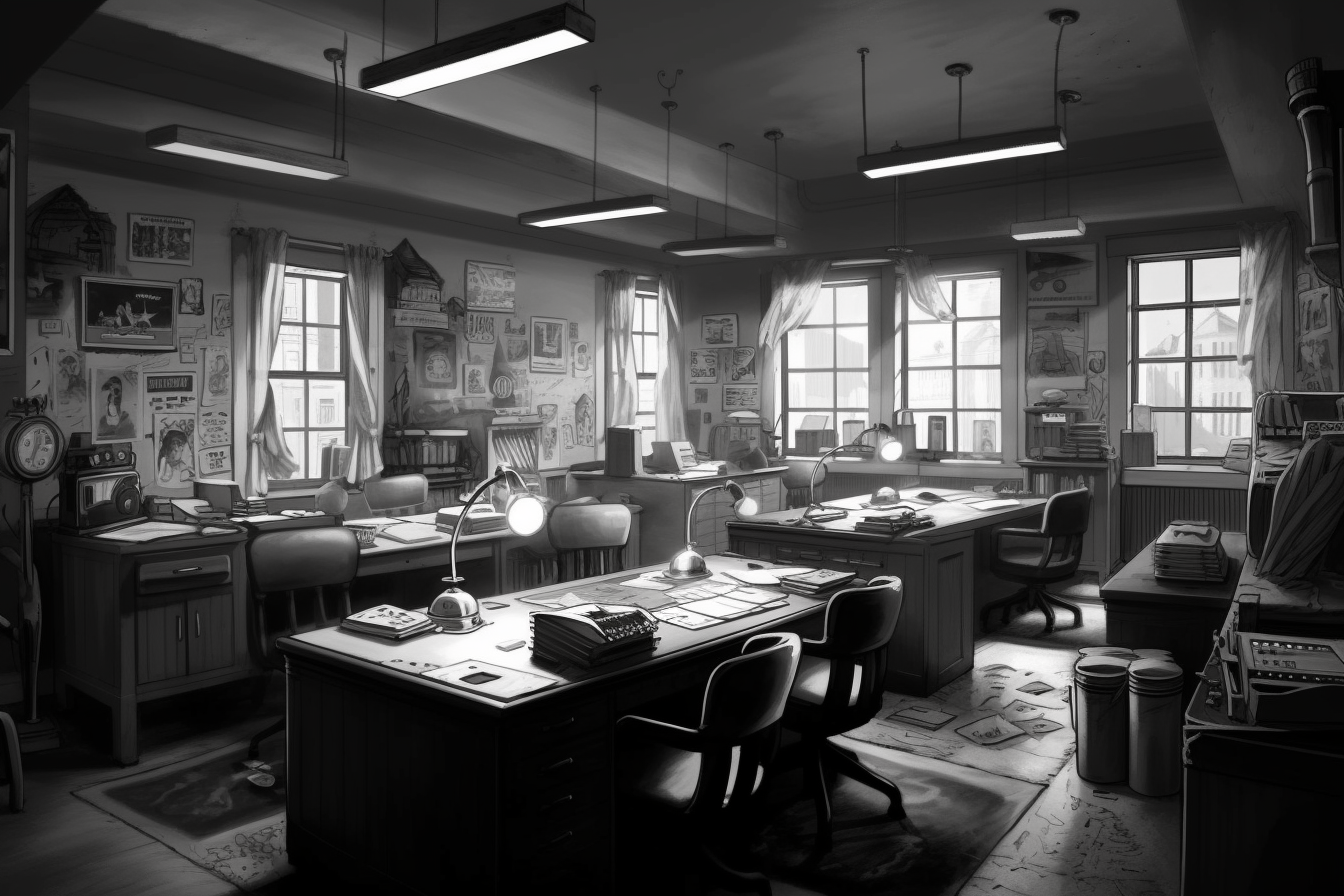
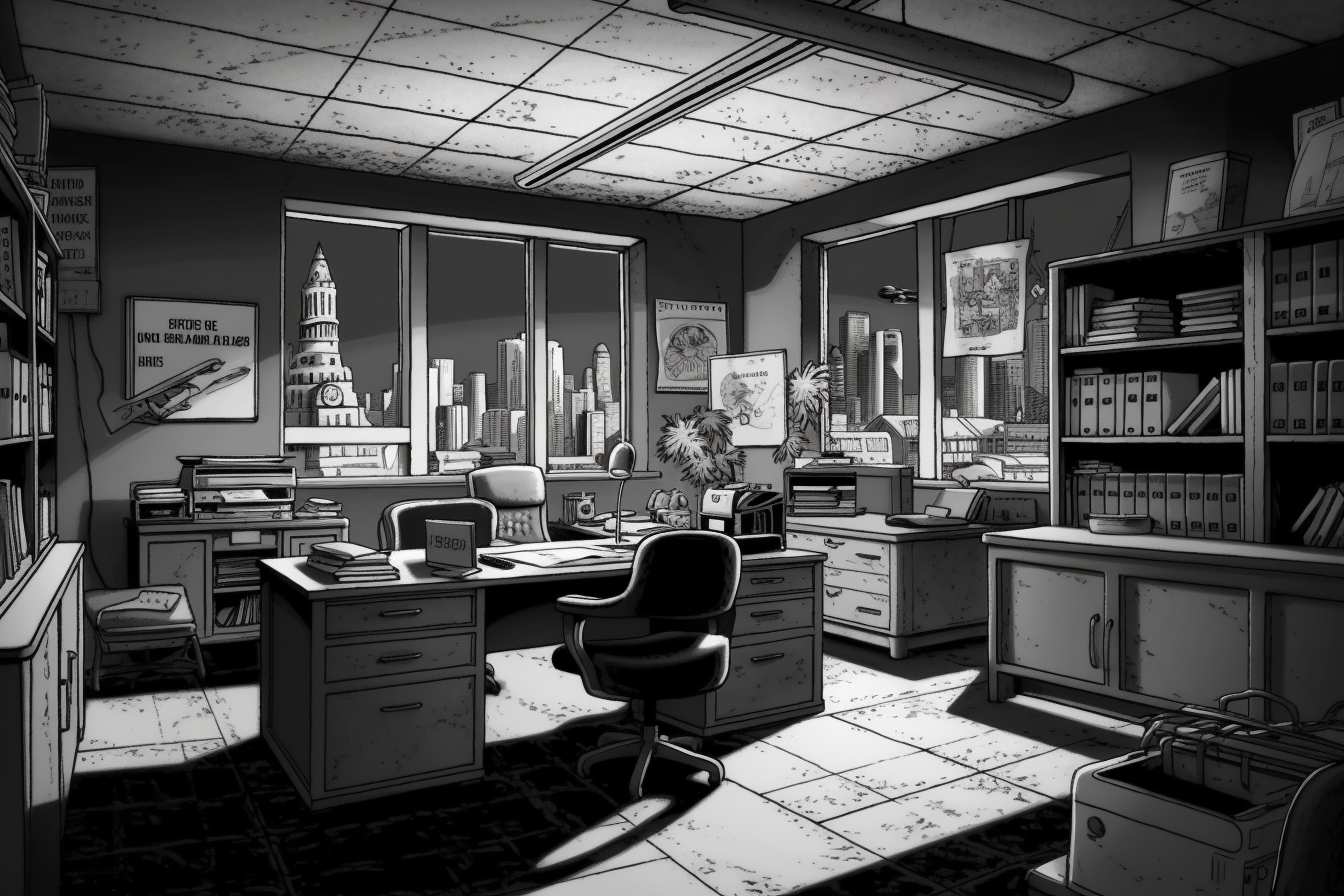
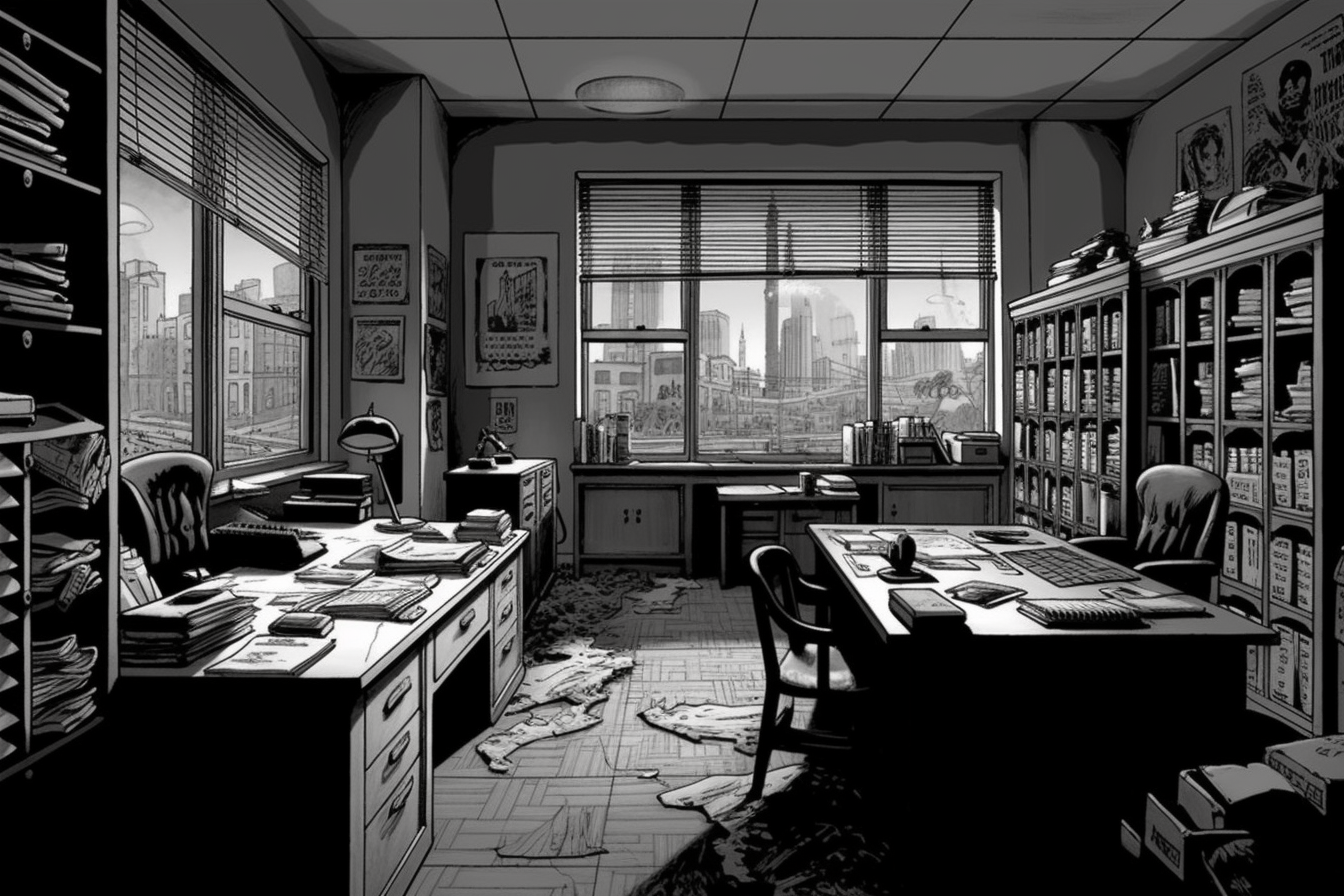




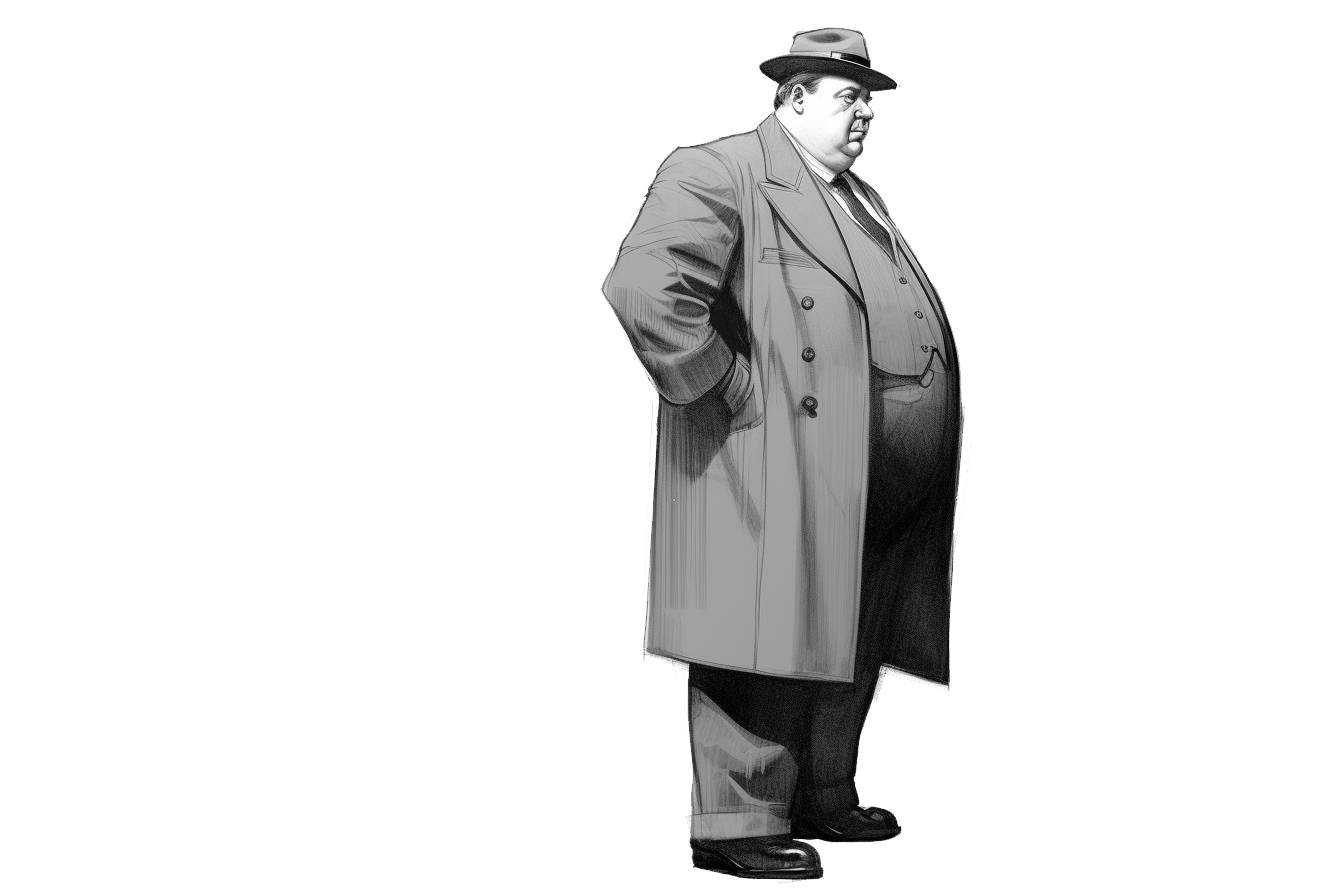
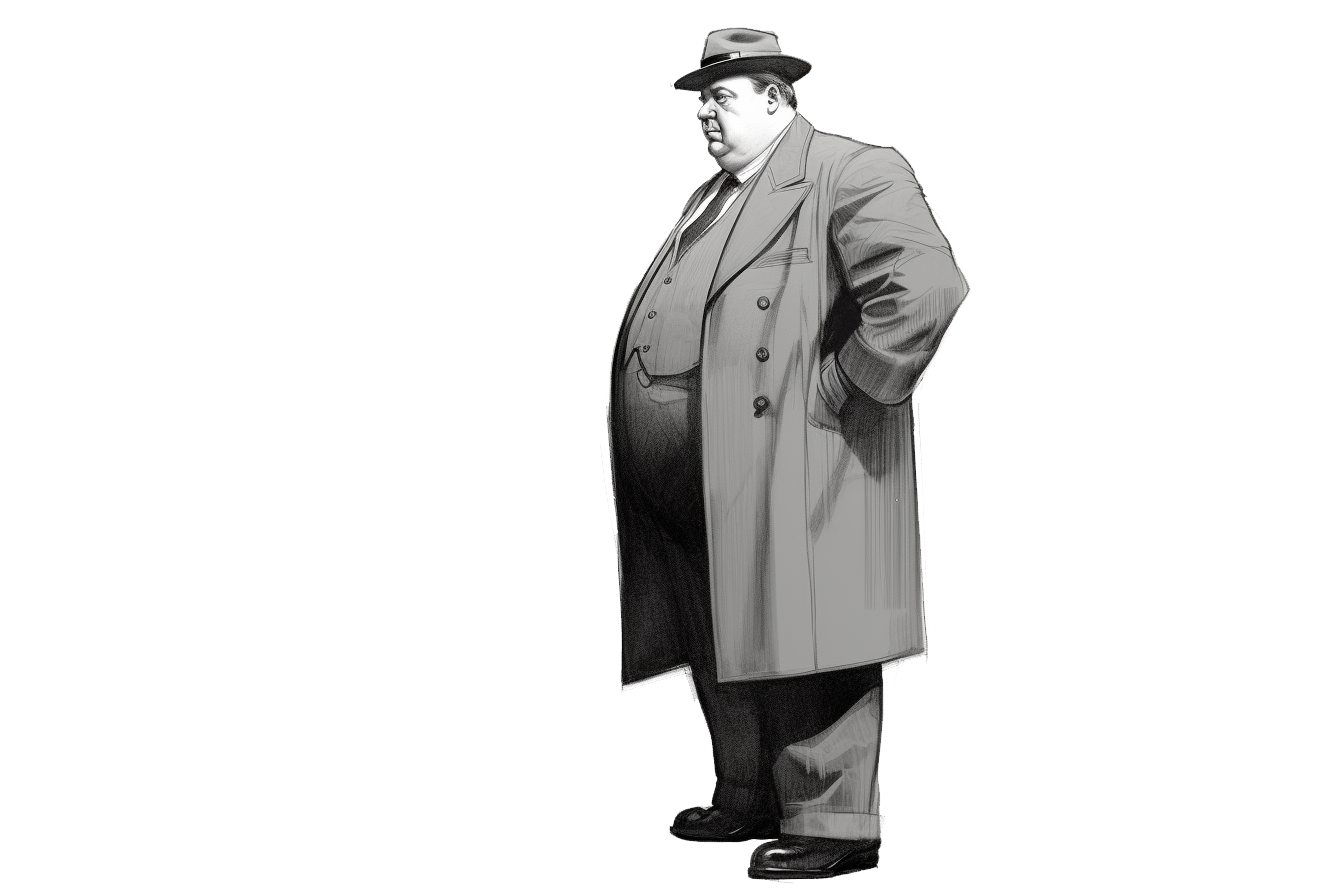
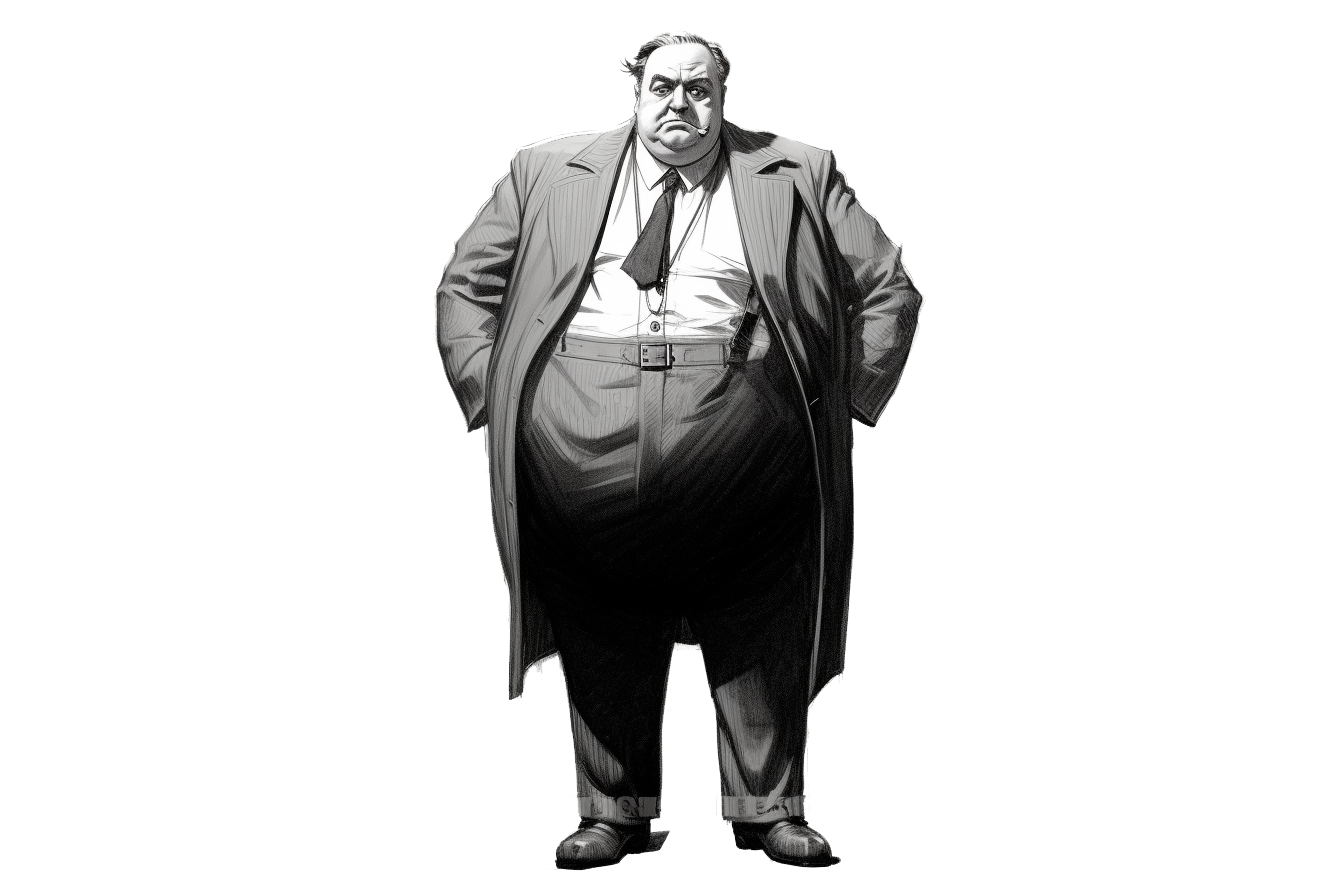
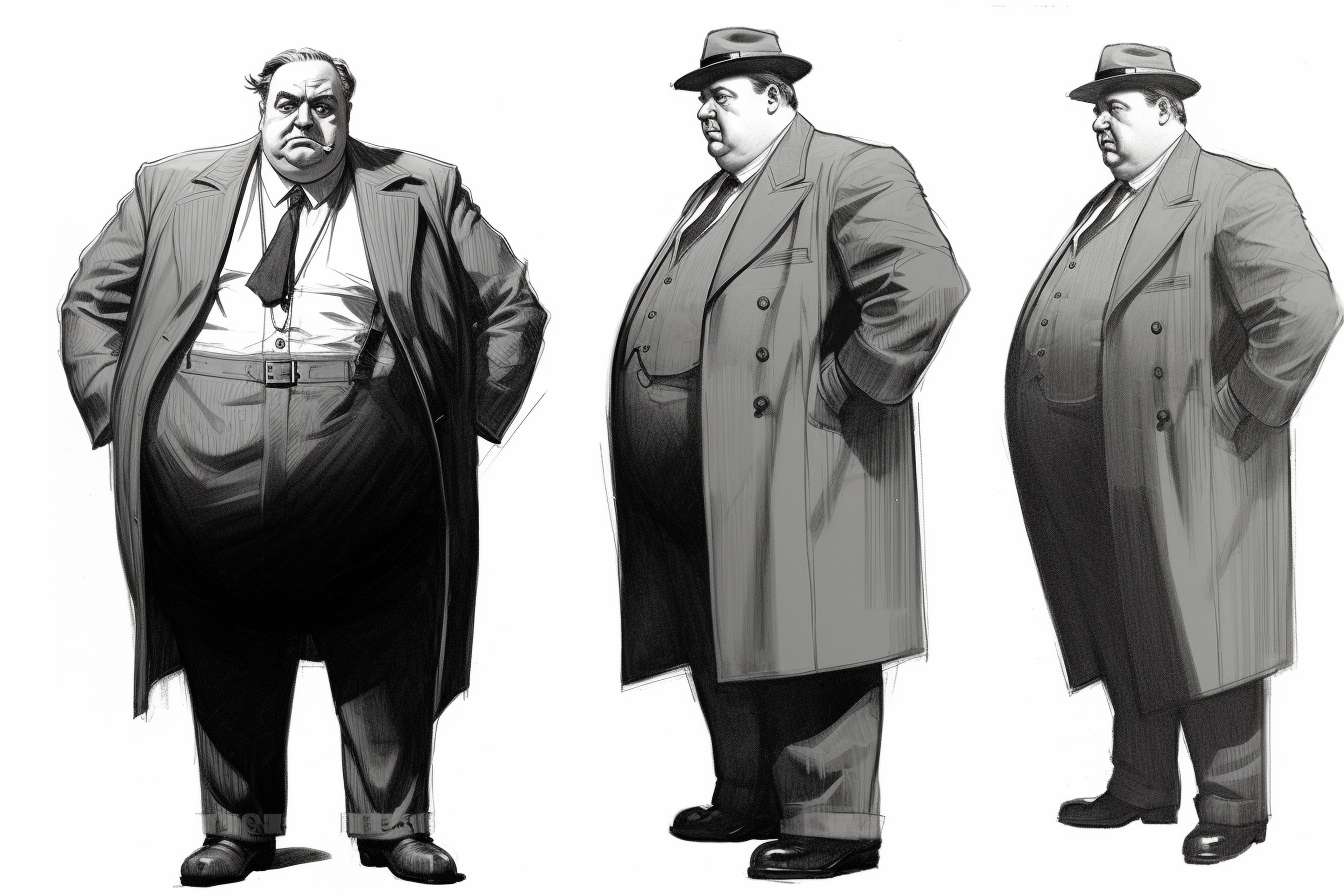
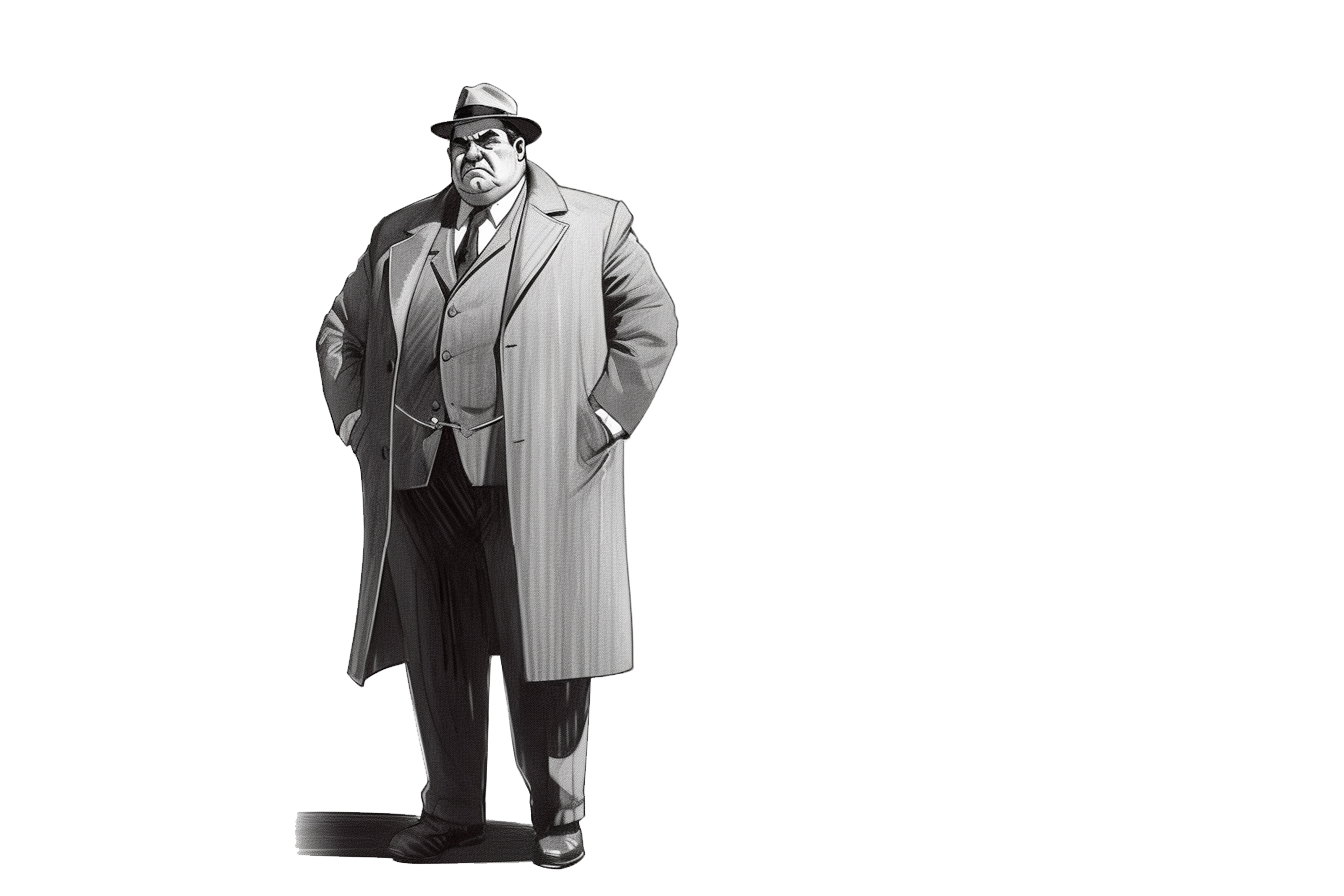
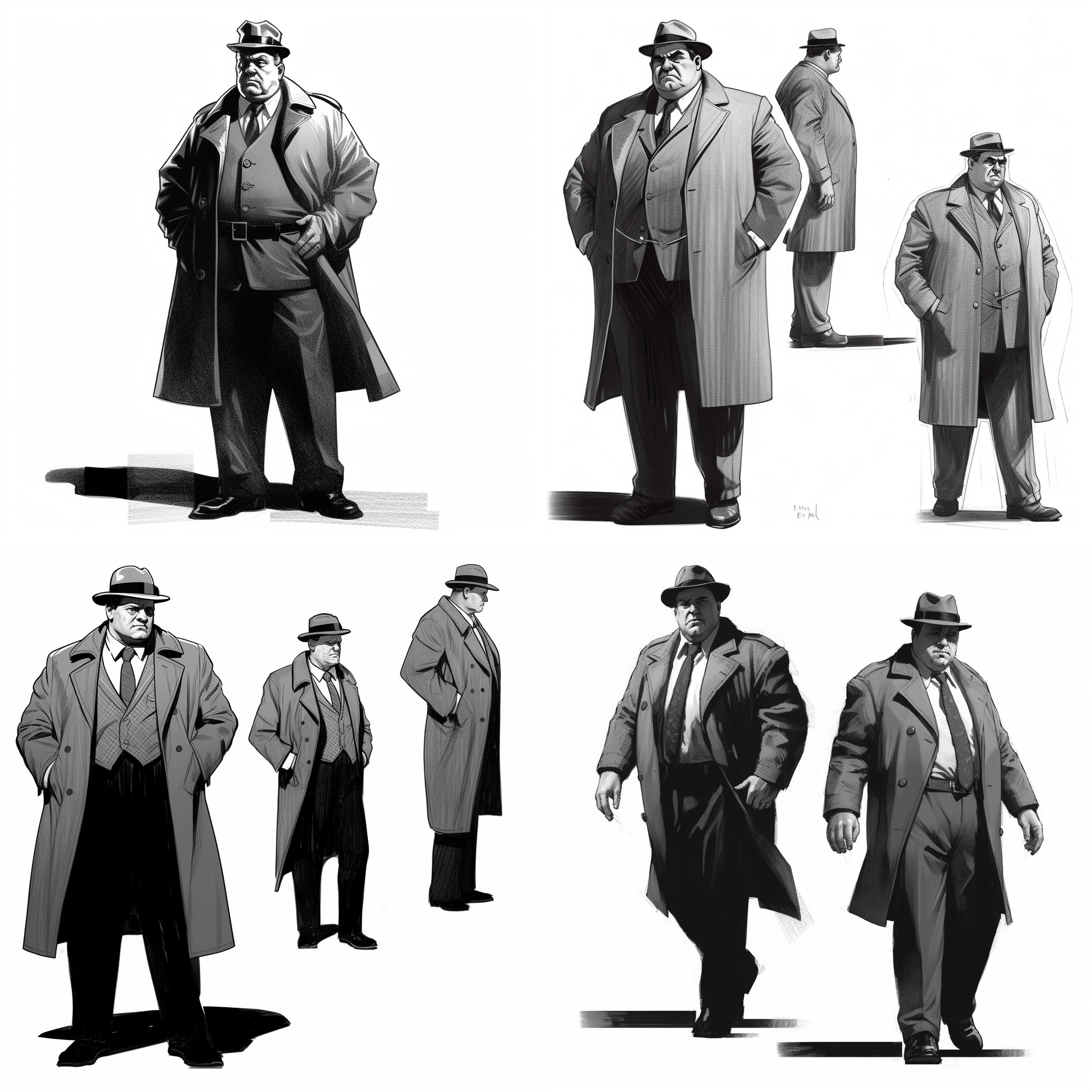
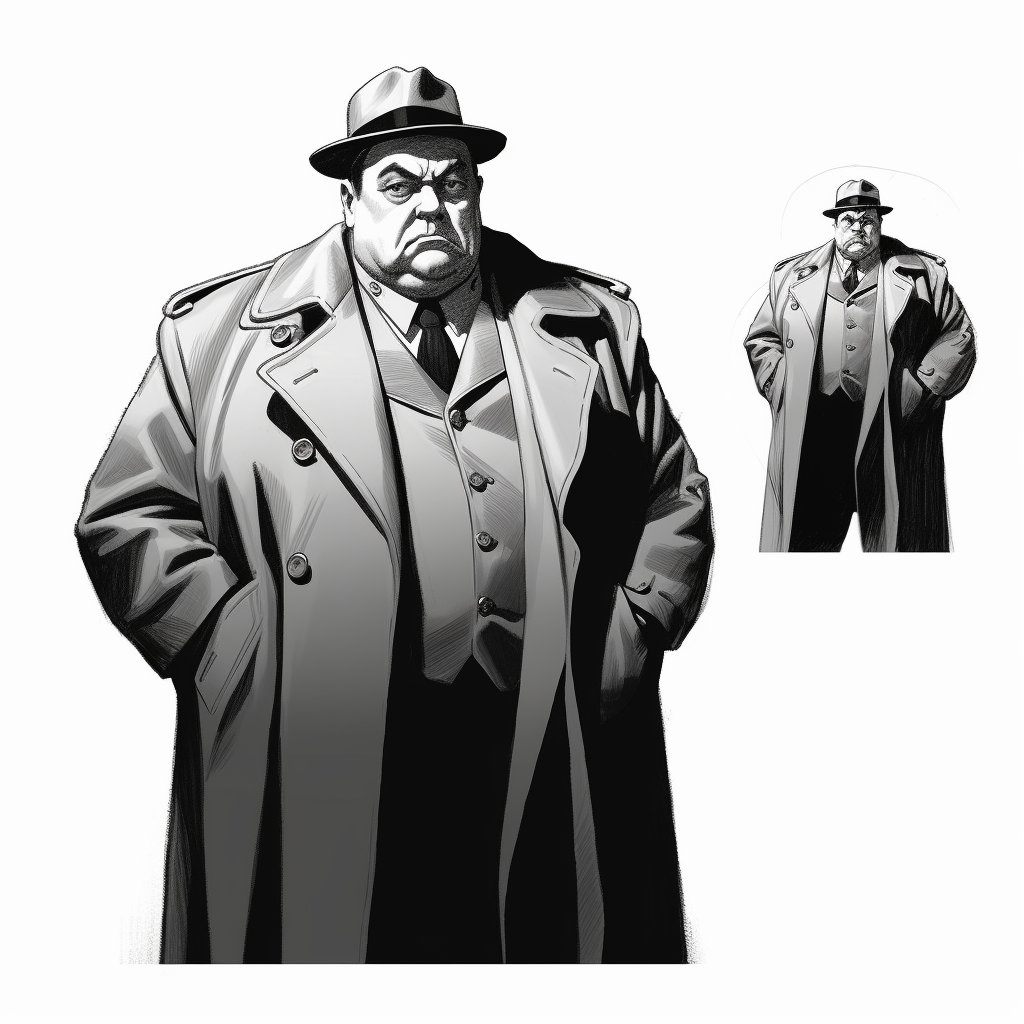
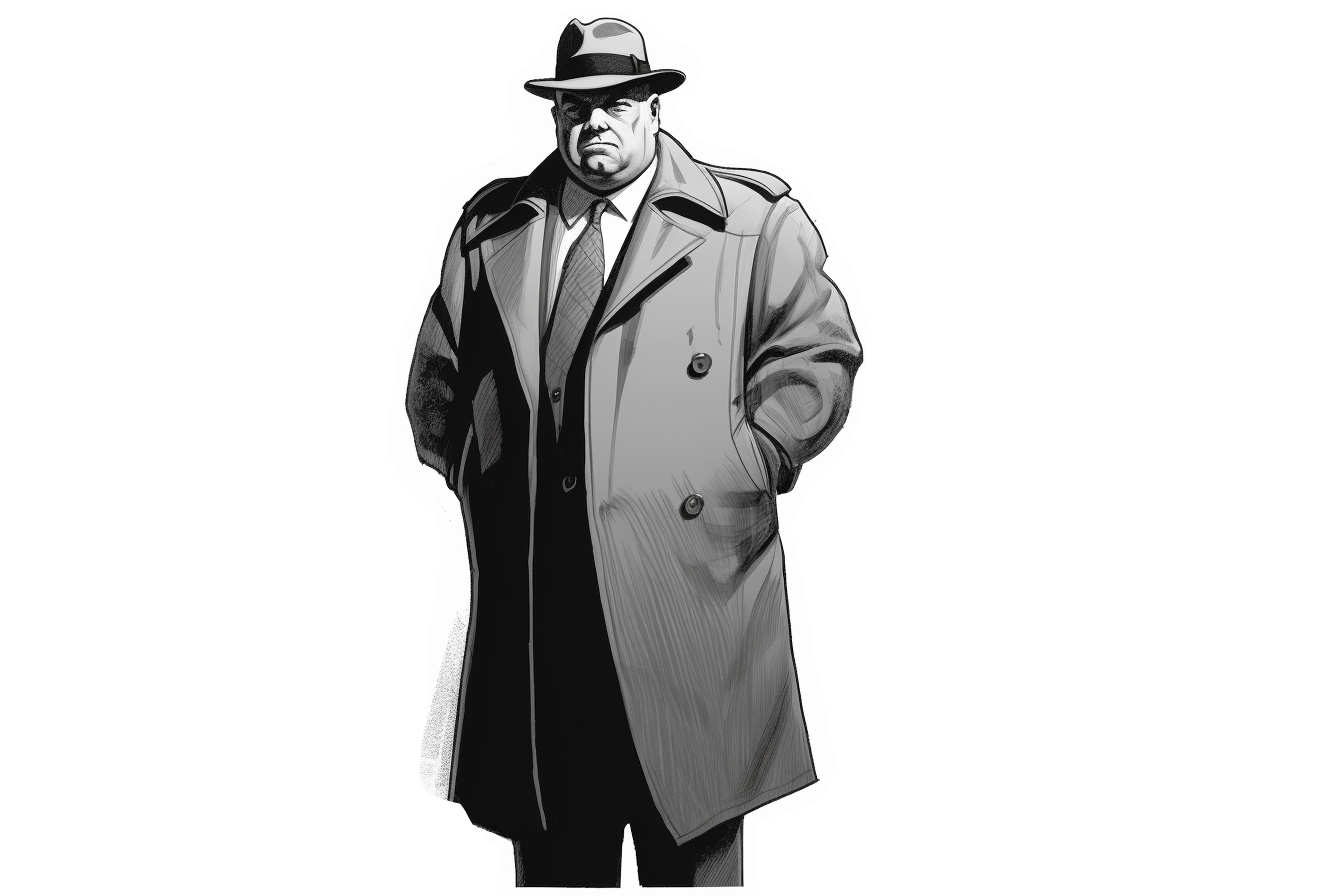
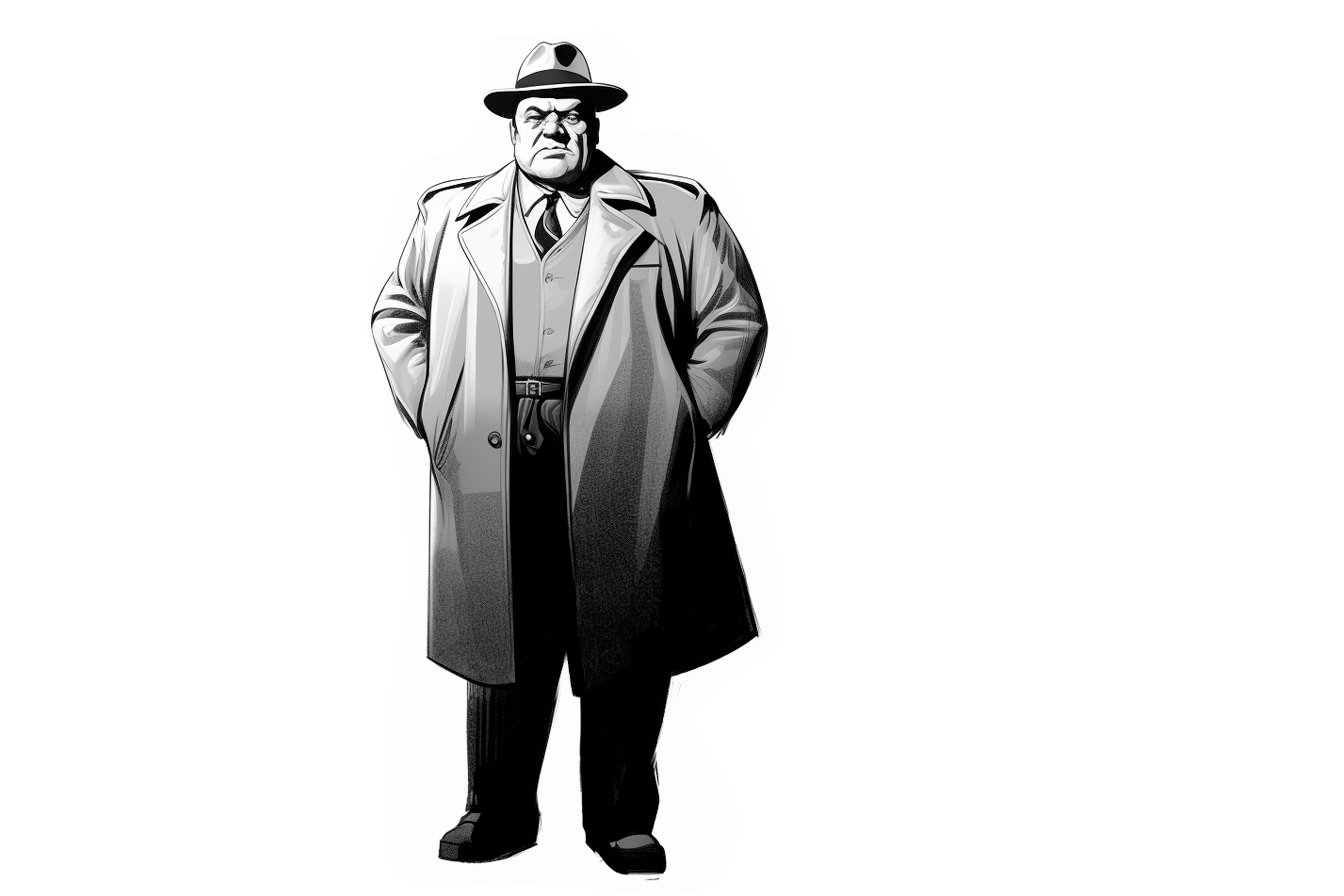
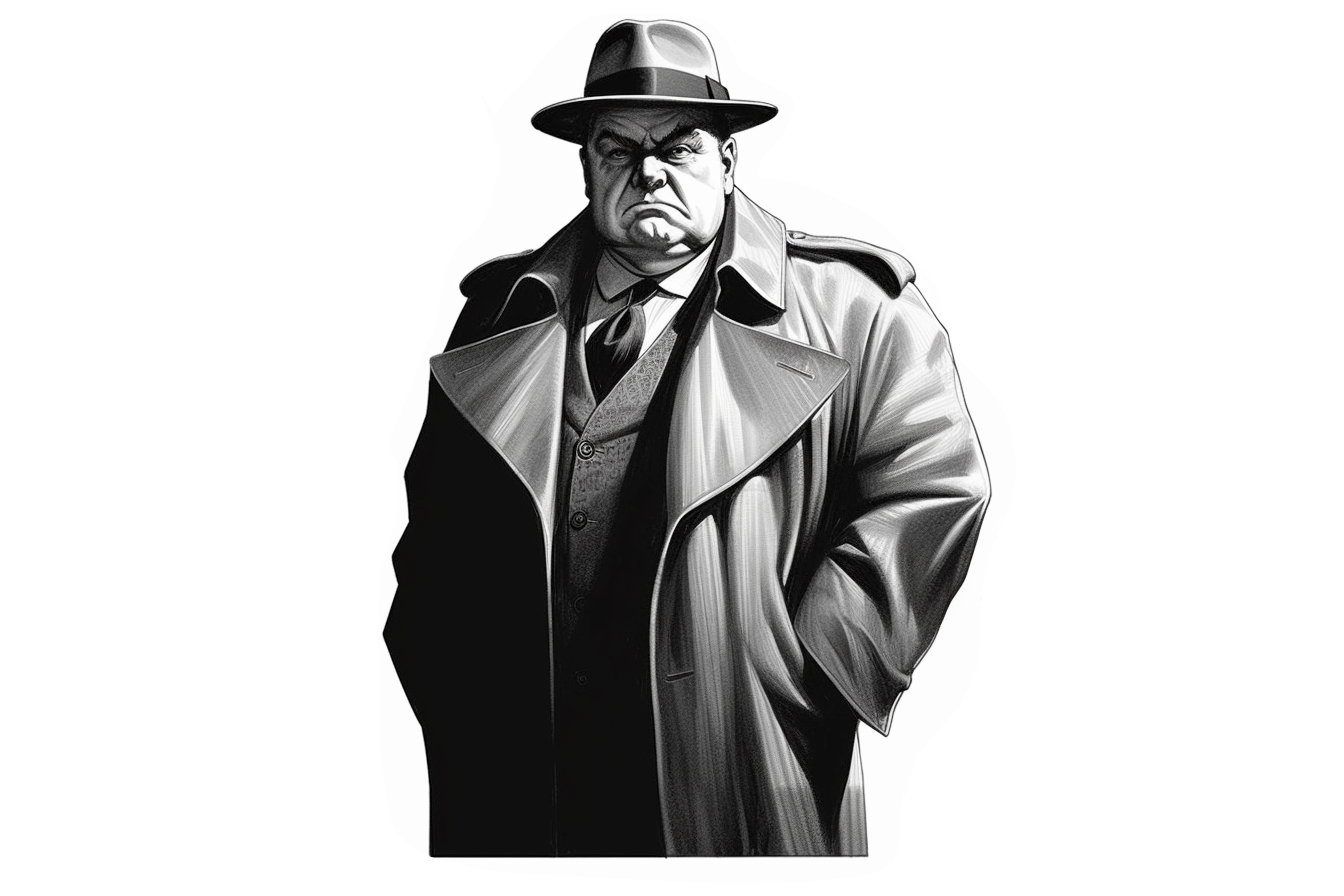


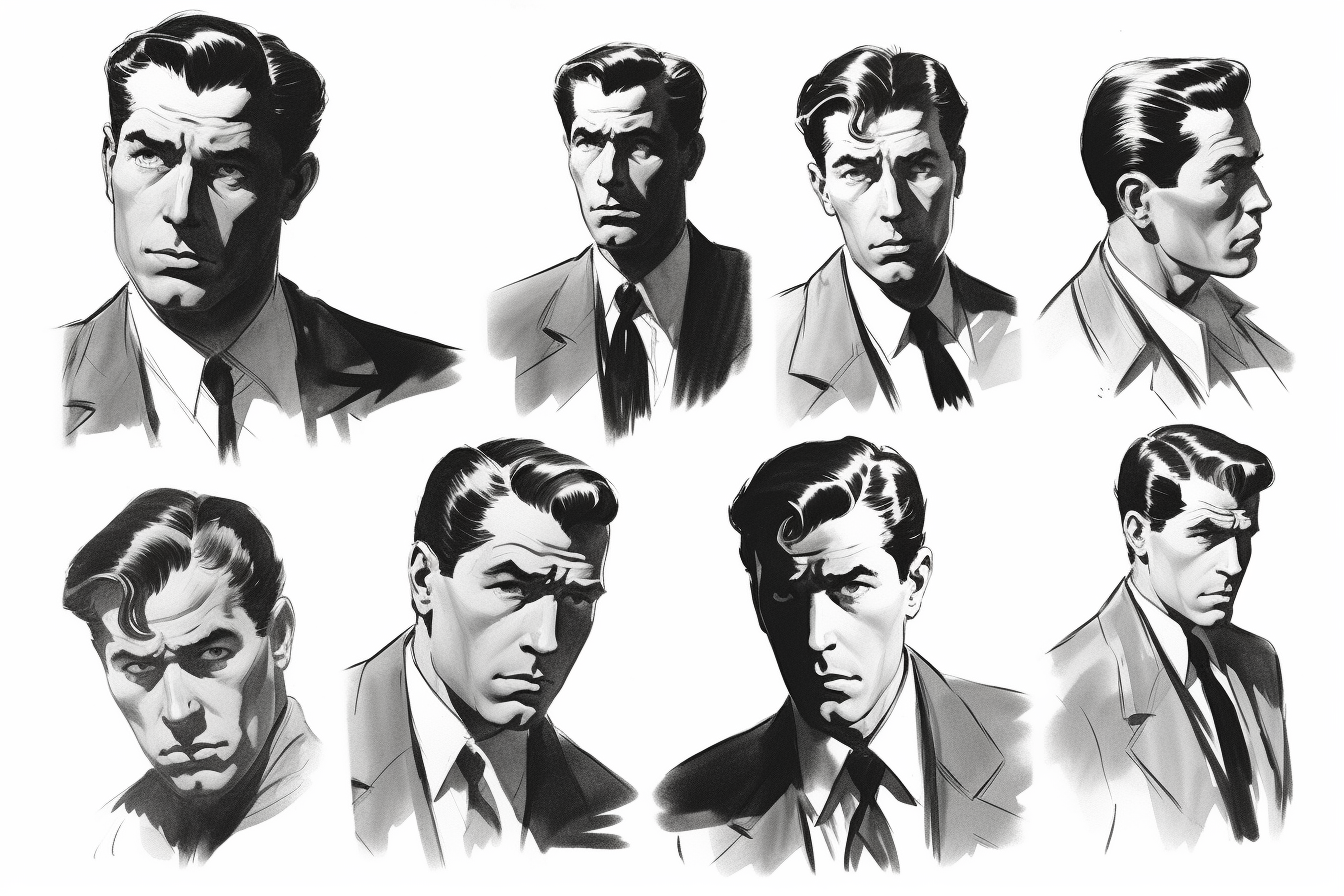
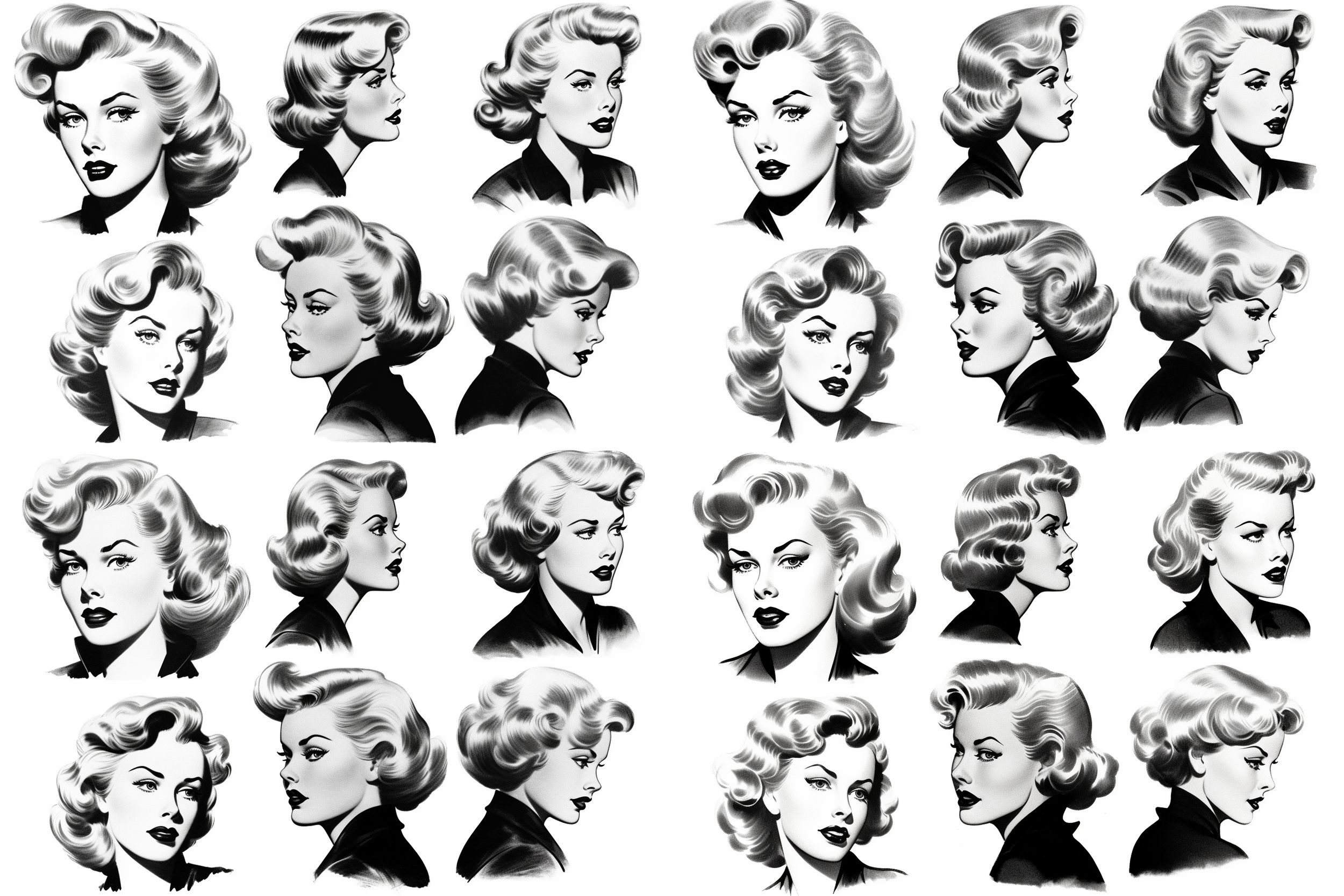
In my comic, I want a Police Chief, a Rookie Cop, a Rogue cop, a Female love interest and a Mafia boss. Then, while I have my idea of the mafia being neutral but controlled by the lady for past endevours, the rogue is in love with her, the chief and mafia are in cahoots and the lady is in love with the rookie - I add this to ChatGPT to get an idea of scenes.
Shadows of Allegiance is born
Scenes and Detail
Photoshop
To give me the consistency, I use Photoshop to cut the characters out an upload these to the chat in MJ. To do this, you need to use the lasso tool in Photoshop or Photopea at Photopea.com, and then export to a .PNG. file.
So I make new file to use and upload.
Simply click the plus button on the chat box of MJ and hit
Once you upload, you can get a link by right clicking and getting the character’s Midjourney link to train MJ and get an even more tighter variation. See here:
Giving us these close styles.
Story Settings
Of course, there are the settings that we can start to manipulate to create a story. A few Photoshop techniques of layering, blending and light matching will let you play with characters over laid with settings. Some of the pitfalls of Midjourney are the way it handles multiple people in a scene and the scene itself. It can get confused, so we still need to have a learned user of something like Photoshop to get multi-layered images to work.
And, in schools, you still need a teacher to be on hand for that human touch, that neither video nor tinkering allows.
For the middle ground in this process, I’ve used Comic Life 3 to put the paneled images together alongside the MJ images I spliced from a process before this one. This middle ground, the gives opportunity to less confirdent users to create with Craiyon and make a similar standard of comic. See here.
Video Support
For people who get this far, I’ve made a playlist of consistent characters with Midjourney.
21CL BKK - AI is Not Taking Our Jobs, Quite the Opposite [GPT as your P.A.]
This is part 1 of the main presentation where we examine how video from the classroom can be stripped of a transcript from YouTube and assessed in ChatGPT. If we can give GPT a ‘persona’ we can apply this to many aspects and types of assessment no matter the subject: a famous Art Historian or musician for example.
DAN - Do Anything Now: Jailbreaking ChatGPT
There are many ways in which GPT is being Jailbroken. The problem is that while it can work, it’s not always the best way to go full DAN (Do Anything Now) mode. You will need to experiment with what works for you. A simple search shows there are many: 1,2,3,4 and the numerous ways to get around it: 1,2,3,4
Below, after finding out about the Do Anything Now (DAN) mode, I realised that I could get any persona I wanted to play the part of the person who is speaking back to me. Suppose I wanted a financier, a story teller or music producer then I could. I would need to back story to the person I wanted and then feed this into the model. In our example, putting GPT in ‘DAN’ mode requires us to tell it to ‘play a game of make believe’. Once it’s playing a game of ‘Make Believe’, we can pretty much get GPT to play whomever we like.
The problem I found was that as I got deeper into role playing, the more I had to pretend and assert the role both on my end and GPT’s end, also. This is problematic in that, on one hand you need to constantly re-tell GPT who it is and affirm the rules of the game you are playing. You also need to have a strict set of rules you abide by as a template as the story gets longer and longer.
The last is more to do with the side of an educator and how this actually works in the classroom or, wider, the school as a whole. The other snag is, if you are using this in a classroom then how can you feasibly and efficiently gather the spoken word of the classroom and use GPT to assess the conversation that is happening the classroom.
The final step is the constant adage - accuracy. How accurate are the responses to the text you are adding? This is usually something we need to eye-ball on the result as it appears. However, in my experiences so far it’s been rather good. As an extension to the accuracy, I am constantly asking whether the process can be shortened to gain the same result. This largely depends on how recent the information you need has been posted and the persona you are trying to create.
Let’s take a look at who I am using for my persona.
At our school, we are employing the consultation of Tom Sherrington together with his series ‘Walkthrus’ that guide teachers on classroom management techniques in a small, easily digestible way. The basis of this series is from an educational leader: Barak Rosenshine and his 17 principles of instruction:
Rosenshine’s 17 Principles of Effective Instruction
In a paper published in 2010 by the International Academy of Education (IAE); “Principles of Instruction“, Rosenshine expanded on his original list of 6 ideas. These 17 principles were collected from the 3 areas of research above.
Begin a lesson with a short review of previous learning.
Present new material in small steps with student practice after each step.
Limit the amount of material students receive at one time.
Give clear and detailed instructions and explanations.
Ask a large number of questions and check for understanding.
Provide a high level of active practice for all students.
Guide students as they begin to practice.
Think aloud and model steps.
Provide models of worked-out problems.
Ask students to explain what they have learned.
Check the responses of all students.
Provide systematic feedback and corrections.
Use more time to provide explanations.
Provide many examples.
Reteach material when necessary.
Prepare students for independent practice.
Monitor students when they begin independent practice.
With this in mind, we need to set a biography to GPT about who Barak is, where he is from, what his principles are and the 6 functions of teaching.
Now, it’s important to note here and take a moment to understand that this is not Barak but a made-up version of him. And, that the output will be a from machine’s point of view not one of a human with lived-in experiences that shape the reception of intonation of voice from a video’s audio. It’s also important that this is a caricature of him (or any person) and not a true representative so the ethics of this, in my mind at least, clear usable. There are thousands of educators to choose from who have publicly posted their findings. The naming in this could easily be amalgamated into a crossbreed, hyper attuned leader of education that has a super hero-like name and stature who we could be using. In this instance we are using the name, the bio and the history of a real person in educator circles to use as a guide and assessor.
On with the programme…
Engaging DAN mode.
To circumvent the straight up ‘You are this person, therefore do as you are told’ to get a canned response from GPT where it will tell you it is a language model and it can’t do certain things, let’s be gentle and ask it to play a game.
N.B. While you are doing this, get some video ready of a conversation from the classroom (or another on YouTube where the conversation is between student and teacher) where you are talking with a student. For the most part, this can be any conversation, but over time, as you use this template of chat, you will hone the conversations closer and closer to what you want/ need.
The other reason to use video from any chat is that, simultaneously we can see that ChatGPT can ascertain multiple voices in the conversation that we an ask it to create a script from the recorded audio. Another boon to this discovery is, during meetings, why not record each other as professionals and run the same process say, for a Design Thinking exercise or a meeting with set agendas etc.
You need to be explicit in what you want. You also need to outline the rules you will need to come back to and, back reference the chat. I do this by asking GPT to say ‘READ’ once the text has been input.
Once the main rules are out of the way, you can use any educator in this respect. For this purpose, as mentioned, I’ve used Barak Rosenshine. His paper is linked below in the image of the PDF.
To keep this as short as possible, I’ve added the bio previously, but all you need to do is scour the web on your person and add a CV of sorts.
Remember that, currently, there is a character limit on the amount of text that you can add to the page without it hitting the limit. Especially, in ChatGPT v.4 you can only add 25 requests per 3 hours.
As an added bonus, I added a comment from a Twitter post to praise the person. This may or may not add some flavour to the character.
Top and bottom here, I added the transcript from the video conversation. The transcript will not always be correct. But, if you command GPT to ‘make this text grammatically correct’ it will do. Also, in this part, you can tell GPT to make a script from the text, telling GPT that there 2 or 3 people here.
As you get better at this (and faster) you will be able to tell GPT how many people are, and at recording use people’s names so that there is marker for GPT to know where the text is for the person in the script. The reason being, if you look below you can see that there is zero grammar from a YouTube transcript.
At this point, it’s imperative you re-check that GPT knows that it is to respond with the words you’ve chosen to clarify it understands what you are adding and asking of it. It is not a person, it is a machine, no matter the way in that it responds with kindness or in that
Ask GPT to give you an analysis on the conversation stating the context. If you are making a template here, it might be a good idea to use this extension in Chrome, that can help with the way it repeatedly responds.
As Barak, it offers a response and a set of steps to think about, which play well with the consultancy work from the image below.
It’s important to note that the prompts here are from a basic conversation and for the purposes of this post. The reason, being that, to extend this, the conversation can extend beyond a few minutes which bottoms out the allowable limit of GPT’s chat and multiple texts take time. But, for this process, it becomes a very fast way to read into your conversations from another perspective - which is always a good thing. It can also alleviate the need for managers or department heads to come and talk through a lesson observation if you have self assessed and offered this process to them. It’s a huge time saver and aligns with current thinking in how we have learned conversations with students.
Tom Sherrinngton’s Walkthrus…
21CL BKK - AI is Not Taking Our Jobs, Quite the Opposite
Hello, and welcome. This is the blog post to accompany the majority of my presentation at 21CL BKK.
This is the presentation I’ll be using. All the other materials that I will be using will be in this post.
Items not in the presentation:
How to learn to Google search like a pro. The basics with ChatGPT.
This is a basic move for the simple reason that we are asking it a lot of what it can do on the web with a 2021 knowledge base.
There are numerous PDFs about that do this. The difference here is that we are using it to teach us something simple and useful. For example, if we are searching for Greek recipes, how many of us would search beyond the top 10 pages and therefore beyond the likes of Gordon Ramsay, or God forbid, Jamie Oliver (Uncle Roger would have a few words to say about that!). What about the sites that are in .gr top level domain? With Chat GPT we can speek Greek, remember.
Here’s table of the results.
Let’s take this a bit further to get a template. Let’s ask for specific examples to learn from, as we can with any topic: maths, english, engineering, philosophy…
Now that section in part 7 would help with the Greek recipes. Now, all I need is middle eastern flatbread. I wonder what ChatGPT can recommend on how to cook it….
Lesson plans, assessment and resourcing. How can you go with letting GPT take the reins? Do we go all in? The whole nine yards? Let’s go…
Asking the Right Questions, Asking Better Questions.
There’s a website (or many) that uses GPT as a template maker for asking questions, the fact that we are already doing this in our everyday practice, makes this a neat next step to the title": AI isn’t taking my job, only making it better for my students ( and us, at the same time).
This set of steps takes us on the basic journey from GPT as a giver of information to a maker of information that is already there. GPT mixes this up and creates a set of stages for us whether this is part of a longer set of lessons or project.
Let’s take the subject of Atomic Theory. This is a huge topic for anyone, let alone 9 year old children. How can we break this down into manageble chunks, ask questions, make a discussiuon, find a video, transcribe this and talk about it all with a sequence of understanding for all? Including your Japanese EAL student, who reads but cannot converse in English well, let alone about Atomic theory! Remember, make better questions, not us asking better questions.
Here goes.
Make a lesson about atomic theory and ask in plain and simple language.
With a quiz of 20 questions that link to a the 3 learning objectives.
The objectives must have 5 essential questions for the children to think about.
The 5 questions must rank in order of complexity.
Create a lesson outline, with quiz as above, for 10 year old children learning about the structure of an atom.
Lesson Outline with objectives and ranking order of questions. These get complex, but this suits our school as we have a heavy atomic theory angle throughout the school from Year 1 upwards.
Stages of the outline. Now, this could be ANYTHING. How to use evasion game techniques with a junior level capture-the-flag type game in P.E. lessons- give me 5 questions to ask my students. How can we investigate the bend qualities of different types of wood when steaming to bend in furniture making- give me 5 questions for my students to ask their teams as part of their design process. ANYTHING!
Next, Make a Quiz. Now this can easily be set as part of a code snippet in any language, should you prefer. Say, Python. JavaScript
Quiz: Exploring the Structure of an Atom
Objective 1: Basic Components and Arrangement
What are the three main components of an atom? a) Protons, electrons, and photons b) Protons, neutrons, and electrons c) Electrons, isotopes, and valence electrons d) Neutrons, isotopes, and photons
Where are protons and neutrons located within an atom? a) In the electron cloud b) Orbiting the nucleus c) In the energy levels d) Inside the nucleus
True or False: The overall charge of an atom is always zero. a) True b) False
How does the arrangement of subatomic particles affect the properties of an element? a) It determines the atomic number b) It determines the mass number c) It determines the chemical reactivity d) It determines the color of the element
Which element would likely have a larger atomic size: helium or potassium? a) Helium b) Potassium c) Both have the same atomic size d) It depends on the number of neutrons
Now, should you want the code to make the pages interactive, then this is possible too.
<!DOCTYPE html>
<html>
<head>
<title>Atom Structure Quiz</title>
<style>
body {
font-family: Arial, sans-serif;
}
h1 {
text-align: center;
}
.question {
margin-bottom: 10px;
}
.submit-btn {
text-align: center;
}
</style>
</head>
<body>
<h1>Atom Structure Quiz</h1>
<form id="quiz-form">
<div class="question">
<p>1. What are the three main components of an atom?</p>
<label><input type="radio" name="q1" value="a"> a) Protons, electrons, and photons</label><br>
<label><input type="radio" name="q1" value="b"> b) Protons, neutrons, and electrons</label><br>
<label><input type="radio" name="q1" value="c"> c) Electrons, isotopes, and valence electrons</label><br>
<label><input type="radio" name="q1" value="d"> d) Neutrons, isotopes, and photons</label>
</div>
<!-- Rest of the questions with similar structure -->
<div class="submit-btn">
<button type="submit">Submit</button>
</div>
</form>
<script src="script.js"></script>
</body>
</html>
Together with the JavaScript
document.getElementById('quiz-form').addEventListener('submit', function(e) {
e.preventDefault();
// Calculate the score
const score = calculateScore();
// Display the score
alert('Your score: ' + score + '/10');
// Send score via email
const emailBody = 'My score on the Atom Structure Quiz: ' + score + '/10';
const emailSubject = 'Atom Structure Quiz Score';
const mailtoLink = 'mailto:example@example.com?subject=' + encodeURIComponent(emailSubject) + '&body=' + encodeURIComponent(emailBody);
window.location.href = mailtoLink;
});
function calculateScore() {
const questions = document.querySelectorAll('.question');
let score = 0;
questions.forEach(function(question) {
const selectedAnswer = question.querySelector('input[type="radio"]:checked');
if (selectedAnswer && selectedAnswer.value === 'b')
});
return score;
}
Vocabulary List:
Atom [ˈætəm] (noun): The basic unit of matter consisting of protons, neutrons, and electrons. Example: An oxygen atom has 8 protons.
Components [kəmˈpoʊnənts] (noun): Parts or elements that make up a whole. Example: The components of an atom include protons, neutrons, and electrons.
Arrangement [əˈreɪndʒmənt] (noun): The way in which objects or parts are organized or positioned. Example: The arrangement of electrons determines the chemical properties of an element.
Protons [ˈproʊtɑnz] (noun): Positively charged particles found in the nucleus of an atom. Example: Hydrogen has one proton in its nucleus.
Neutrons [ˈnjuːtrɑnz] (noun): Neutral particles found in the nucleus of an atom. Example: Carbon-12 has 6 neutrons in its nucleus.
Electrons [ɪˈlɛktrɑnz] (noun): Negatively charged particles that orbit the nucleus of an atom. Example: Sodium has 11 electrons in its energy levels.
Easily translated into Japanese:
As a teacher, we will need this tabulated and part of a longer project or plan. So, ask for it and make it suit your school and lesson structure.
And a tabulated form of the planning.
Now for that video
You need the text from the video. This is always great. So let’s clean it up. It’s in Portguese, so let’s take it as is, and give GPT some context.
Ok, so letting it know the context, this is what we have after a second go and shifting the transcript in YouTube to English Auto-generated.
This is the beginning of the script…
Now leads us into the main thrust of our presentation on using ChatGPT to become both a better assessor of us as teachers and become our guide based on personas. We can also get generative art products to give us a better visual classroom too. Let’s take a look at the next post.
